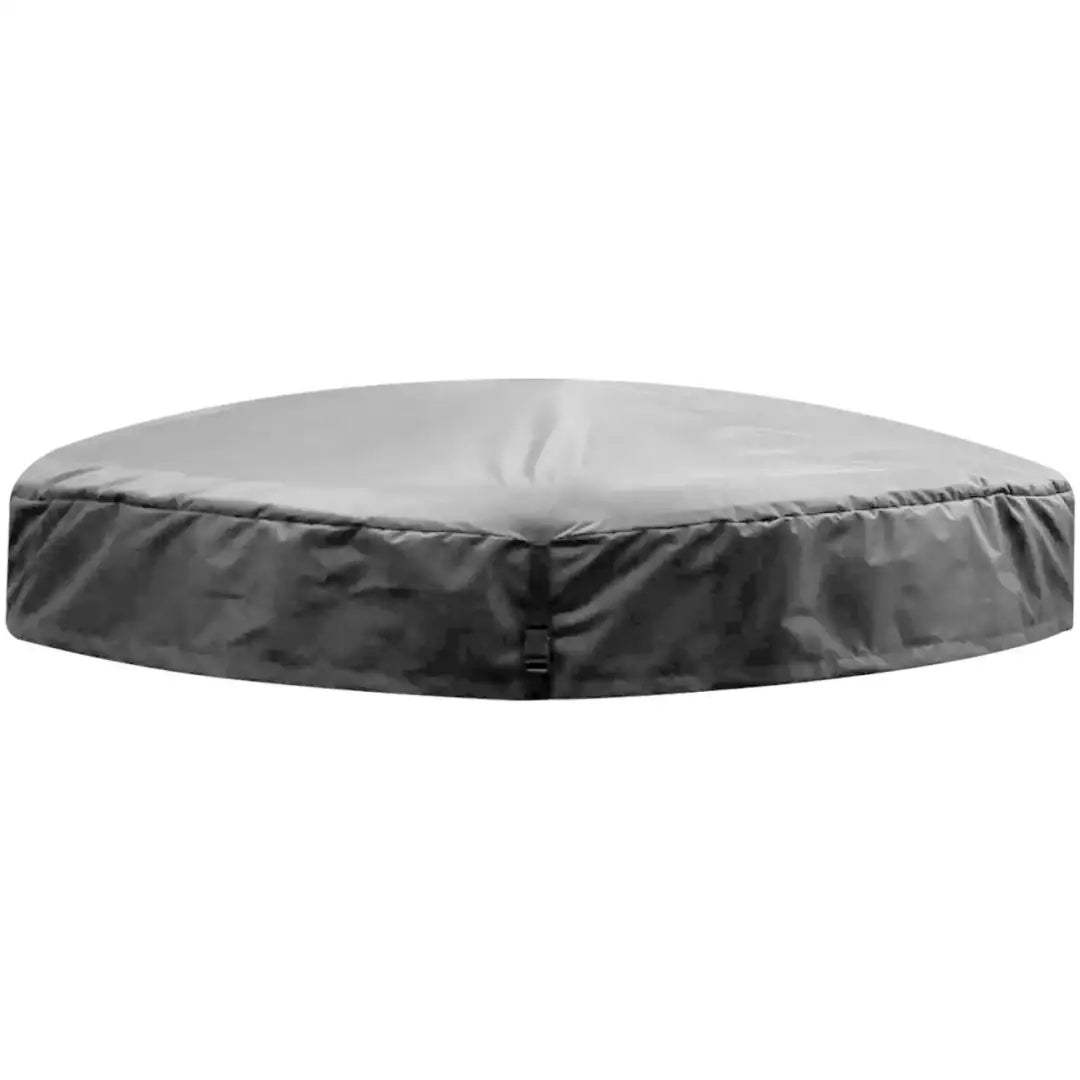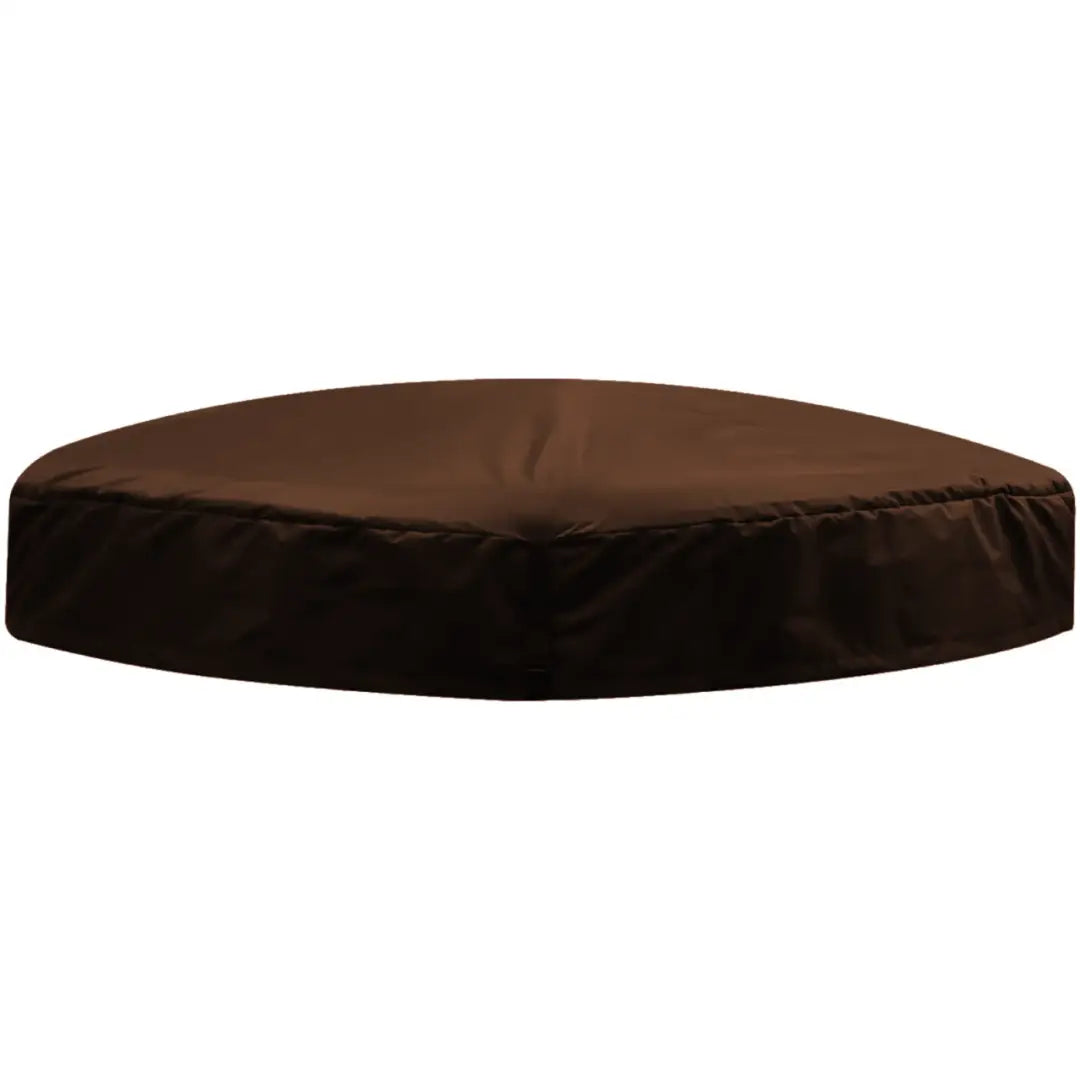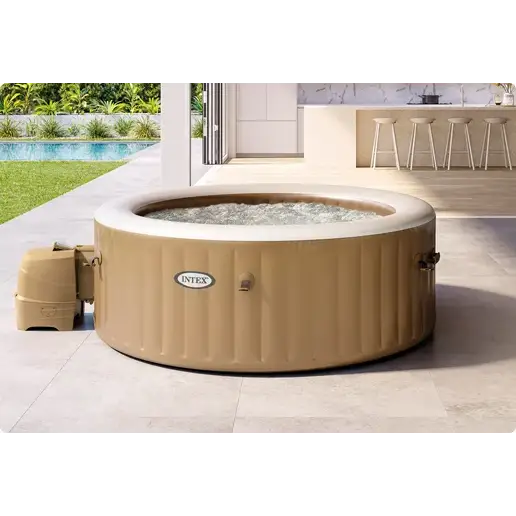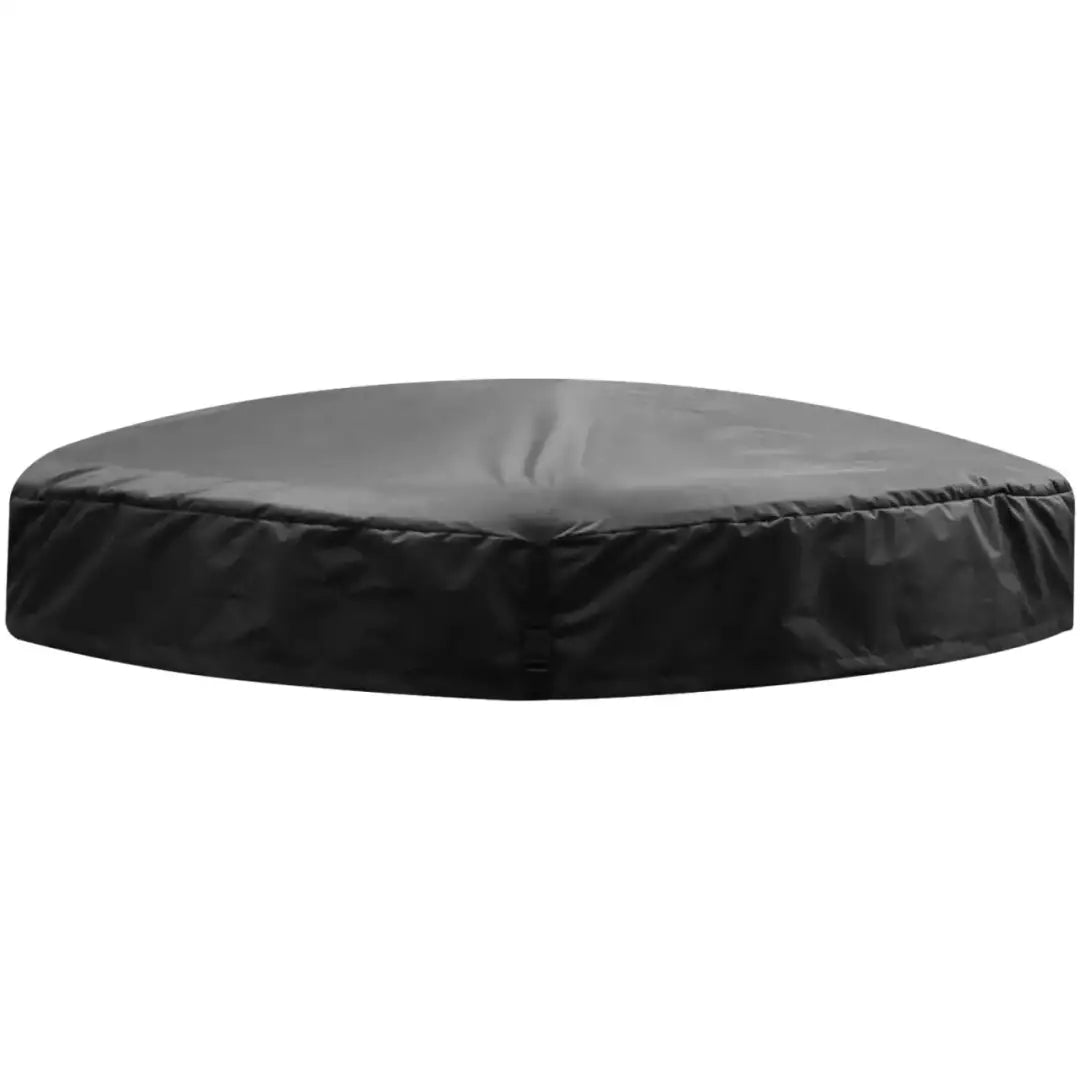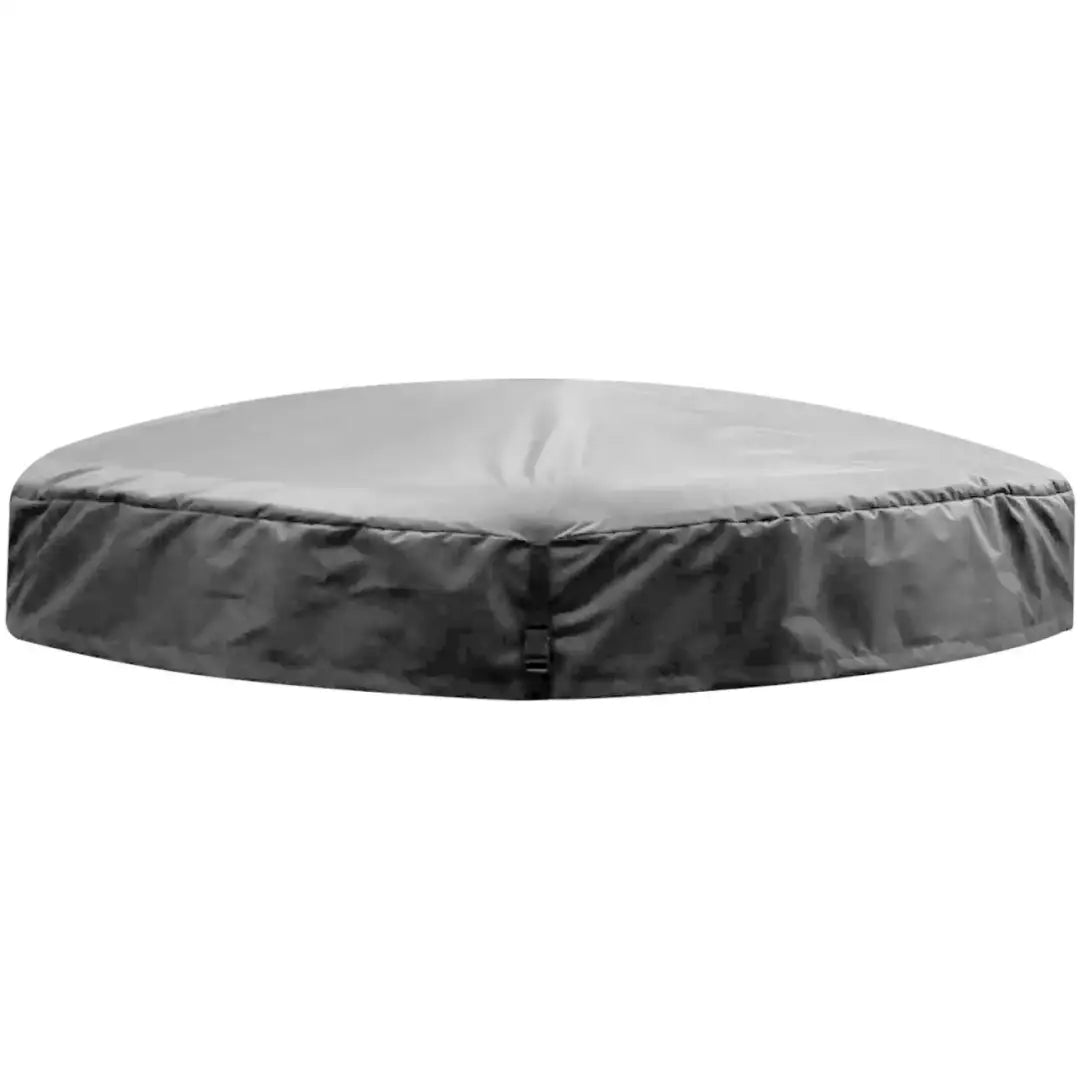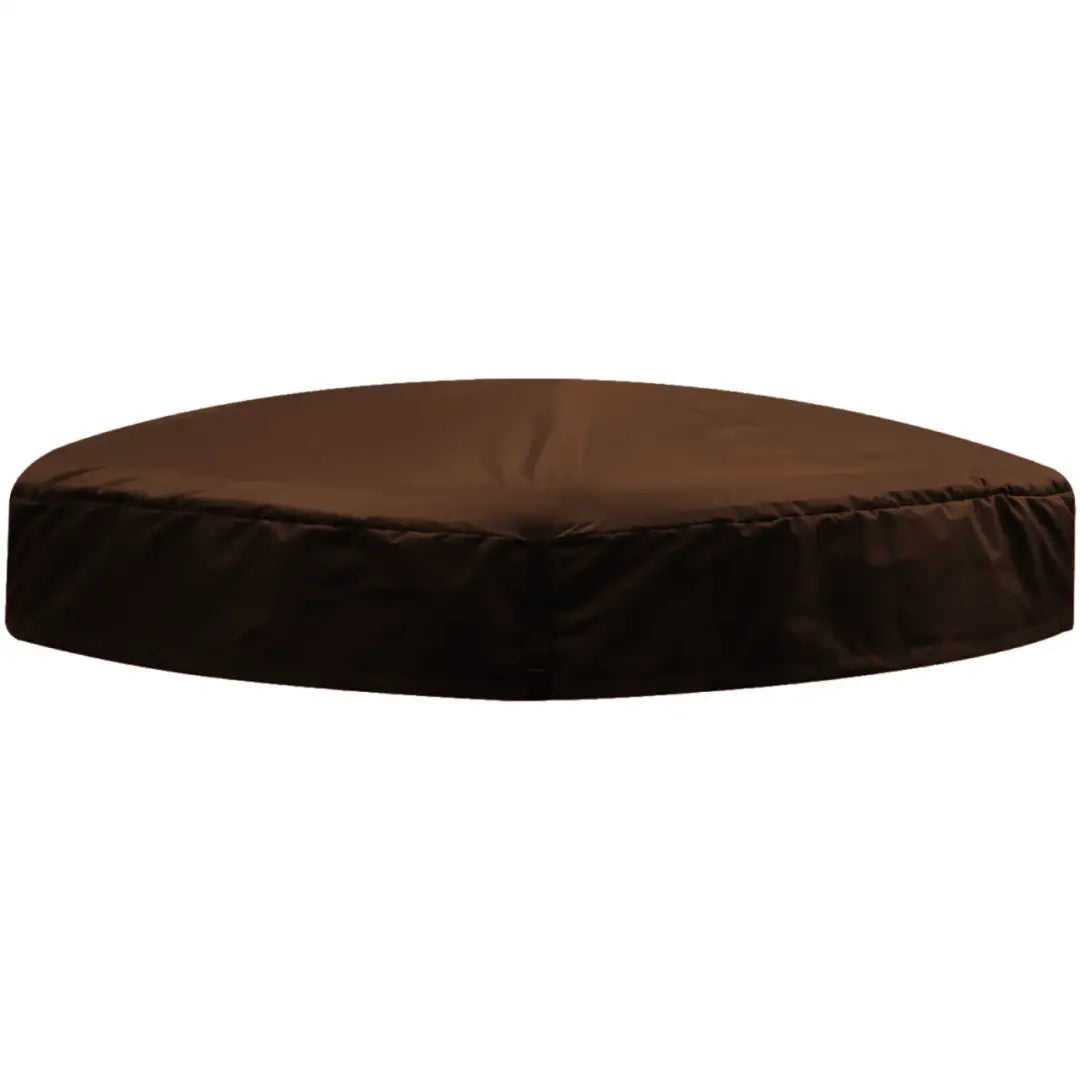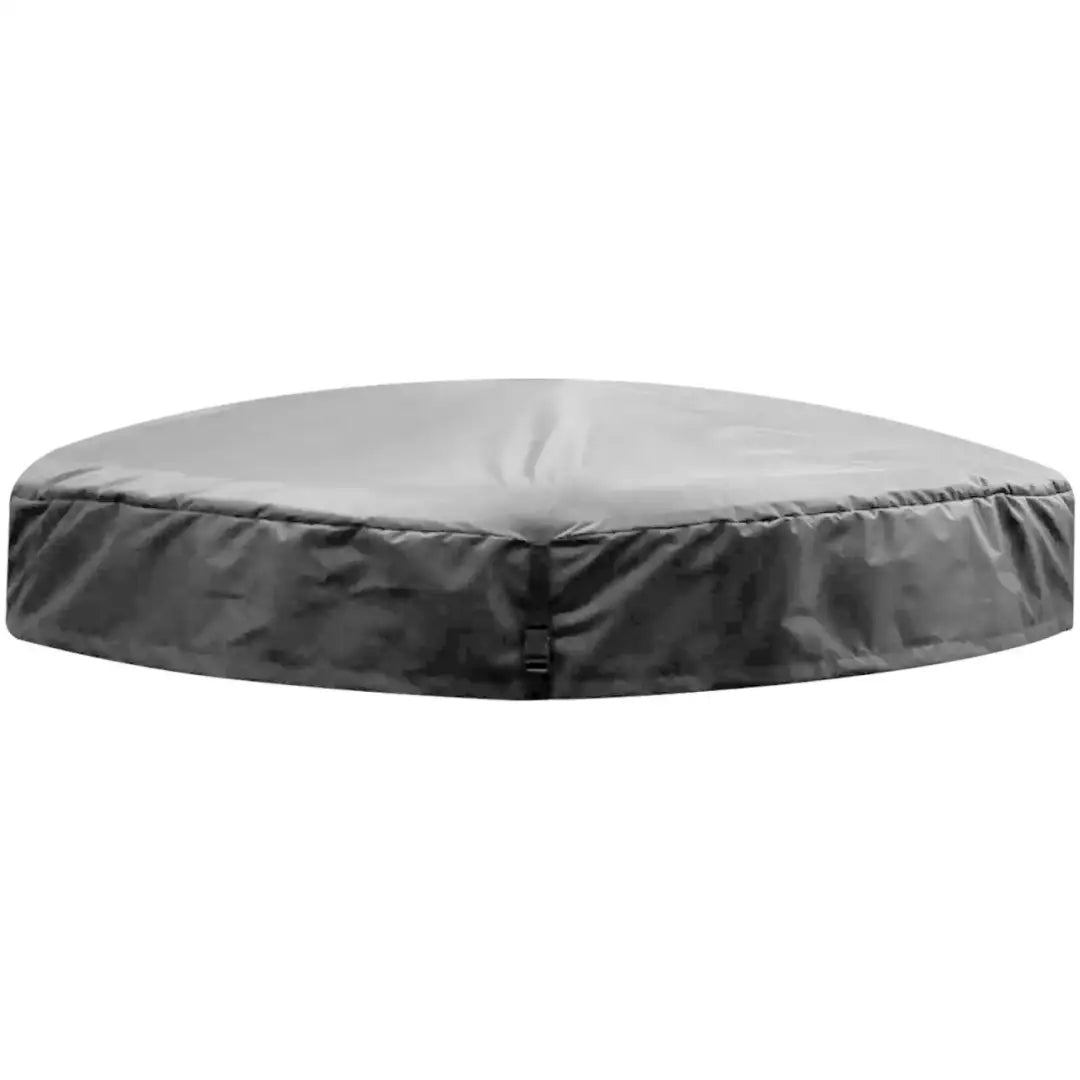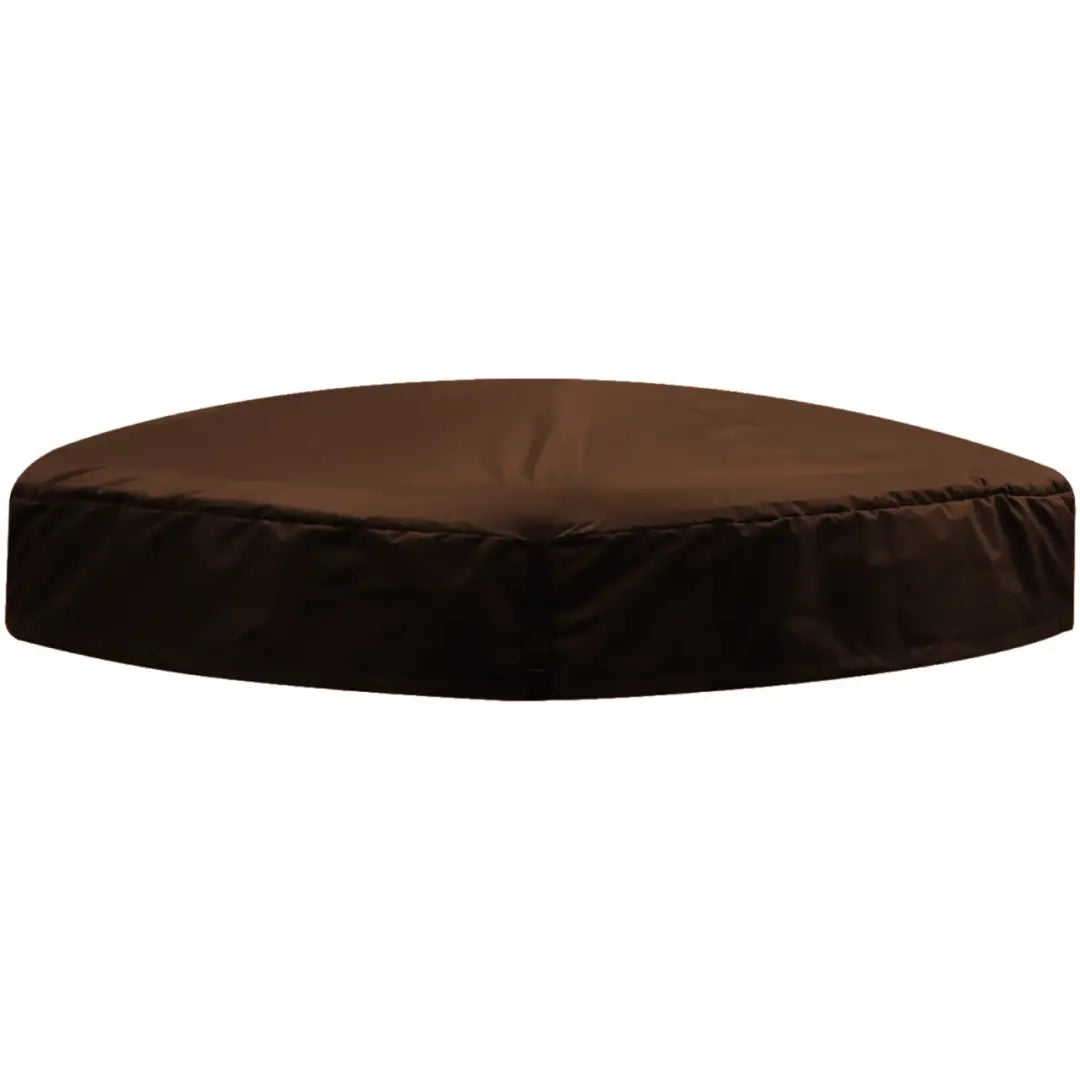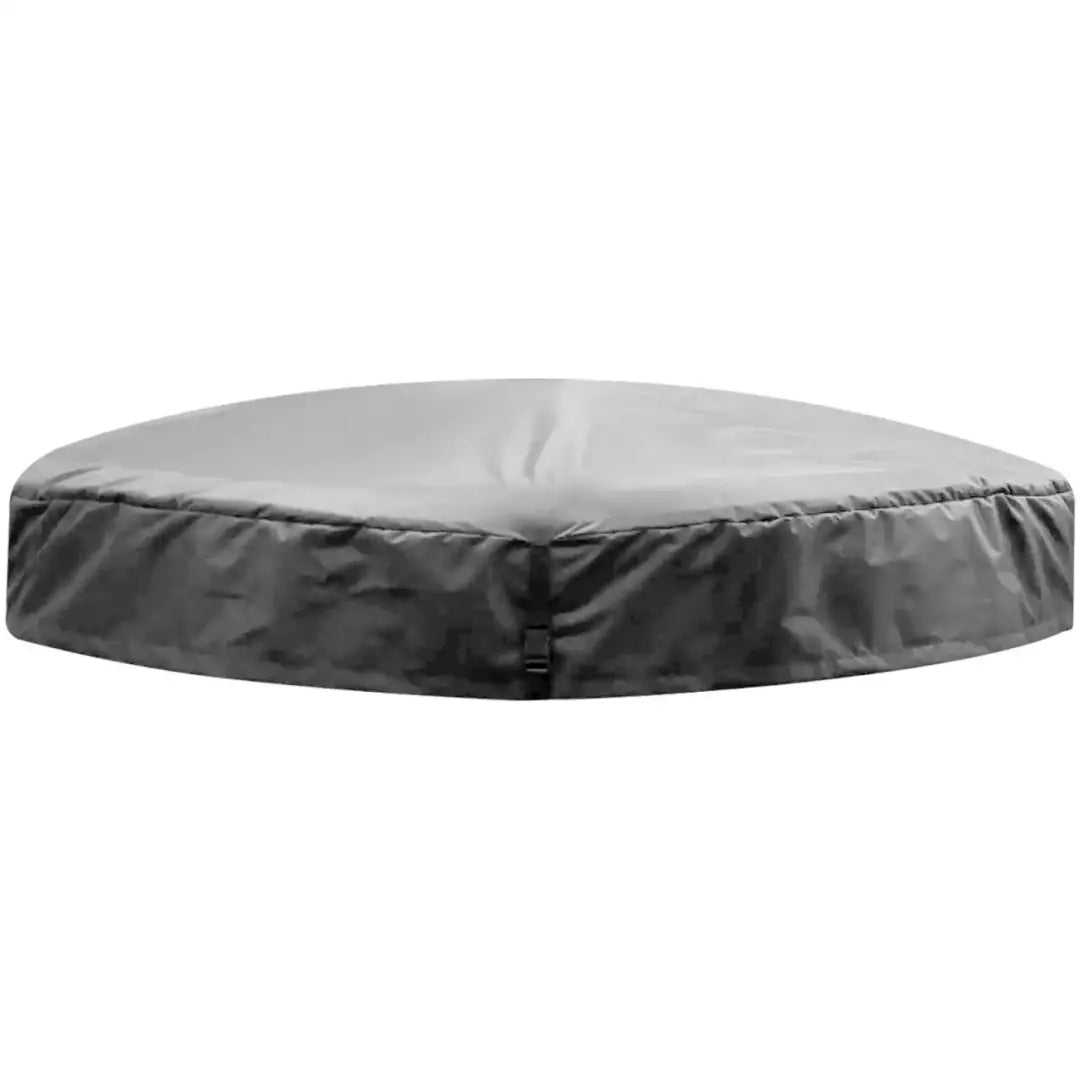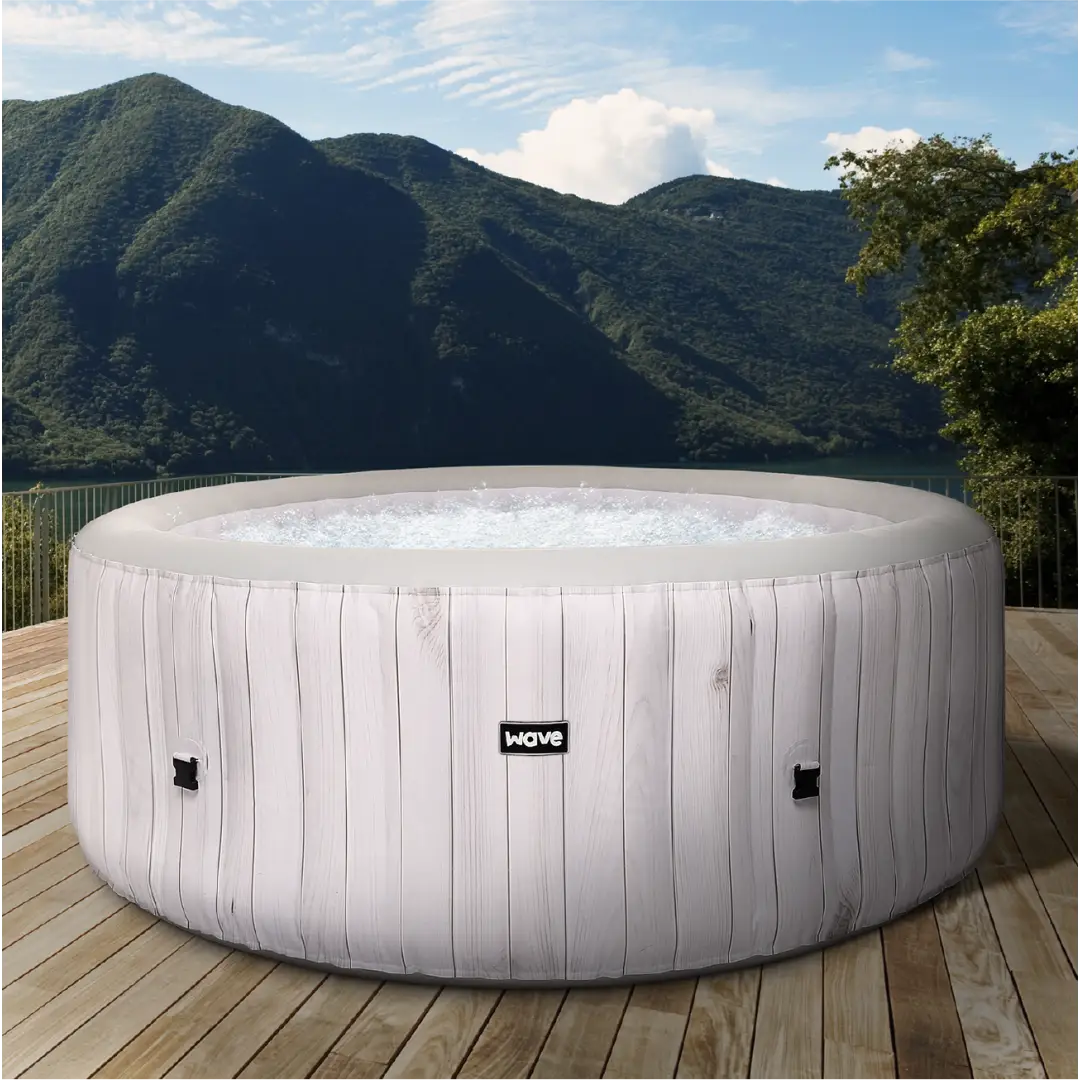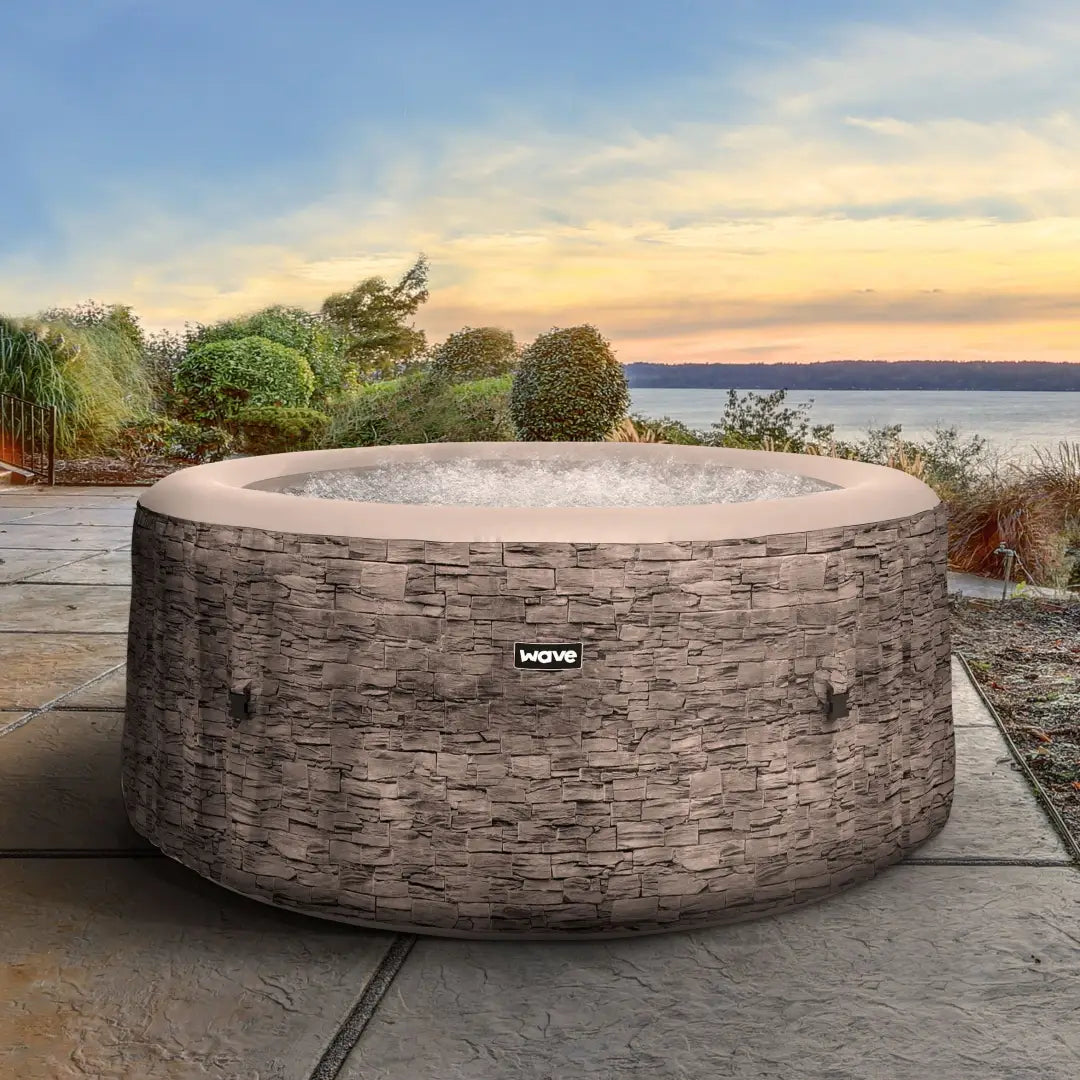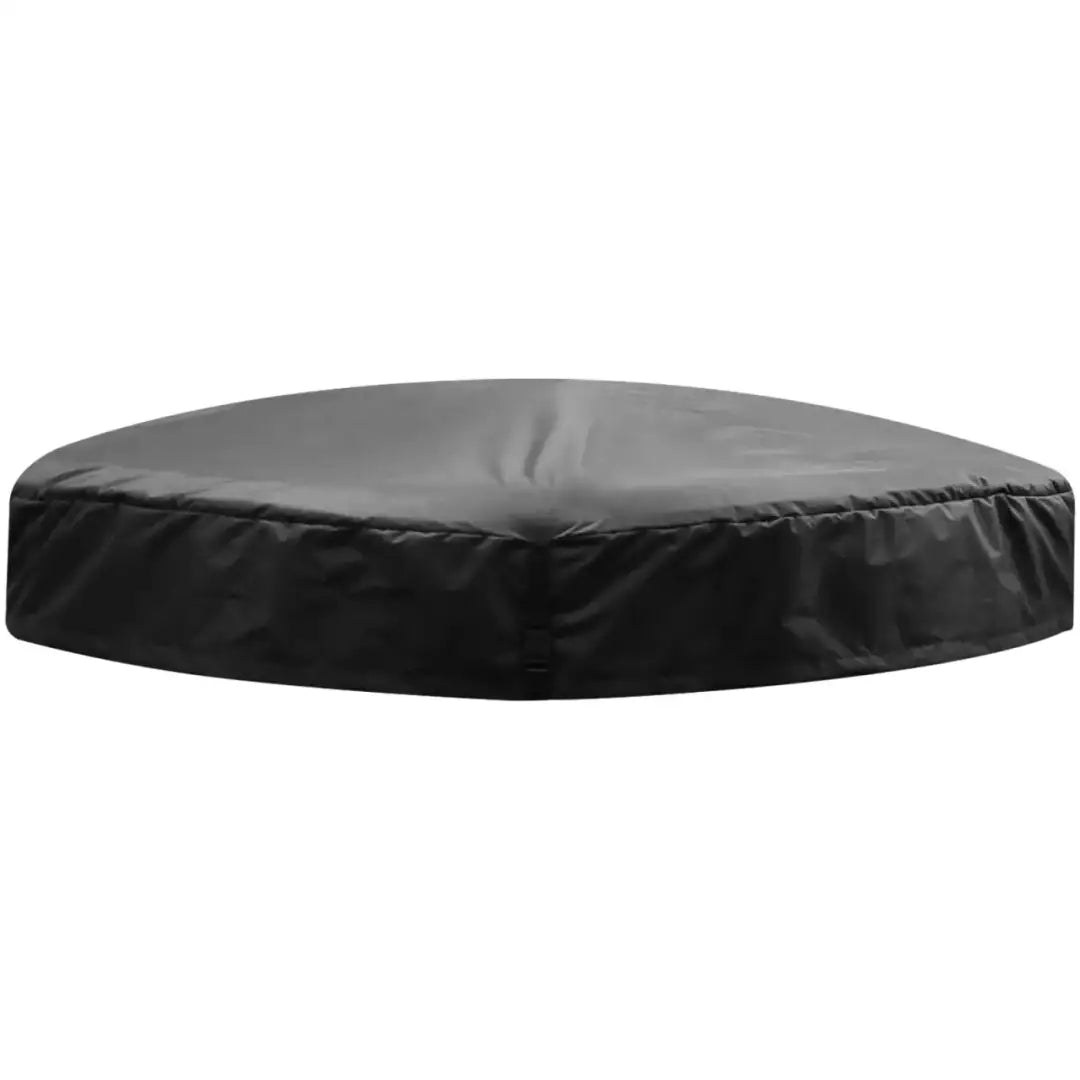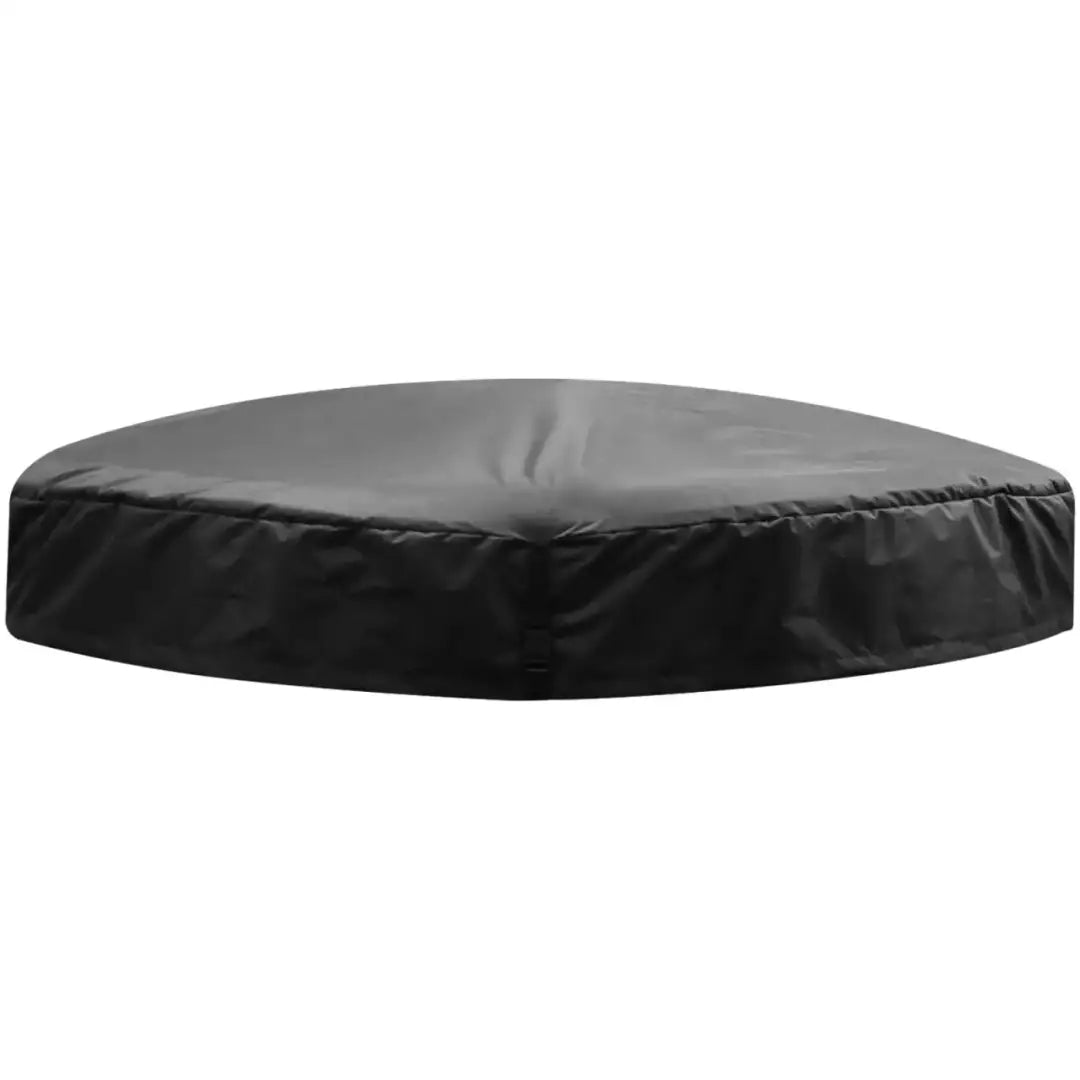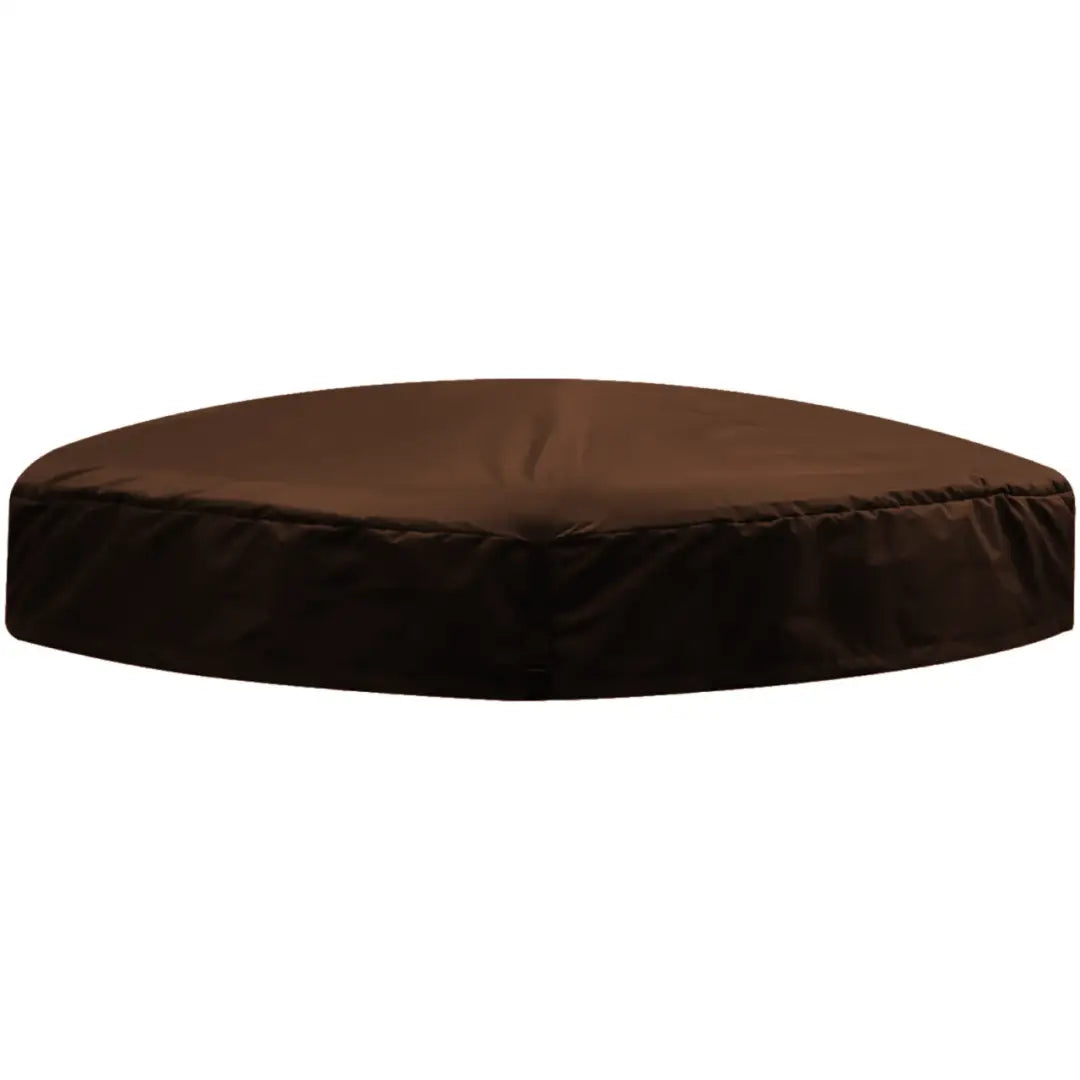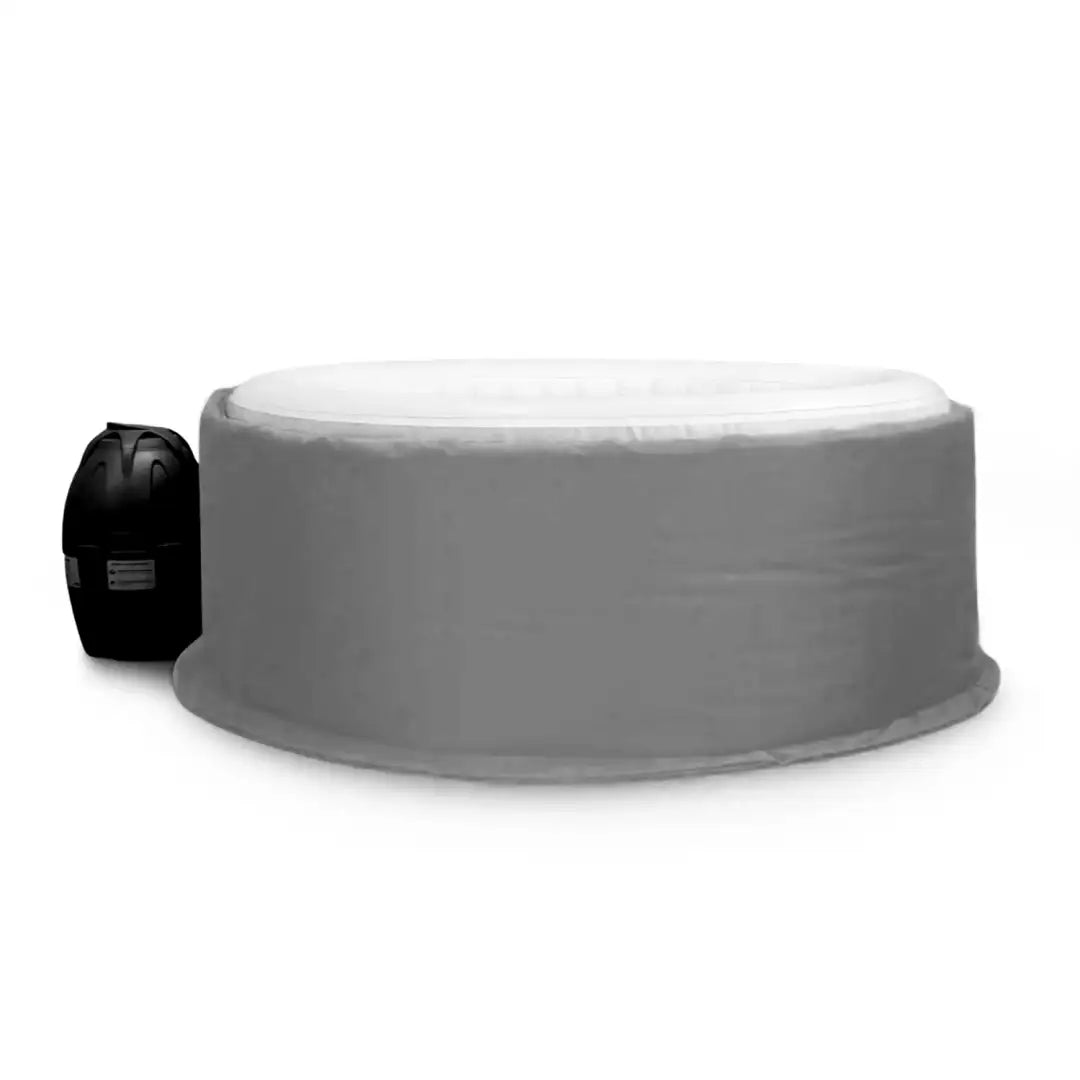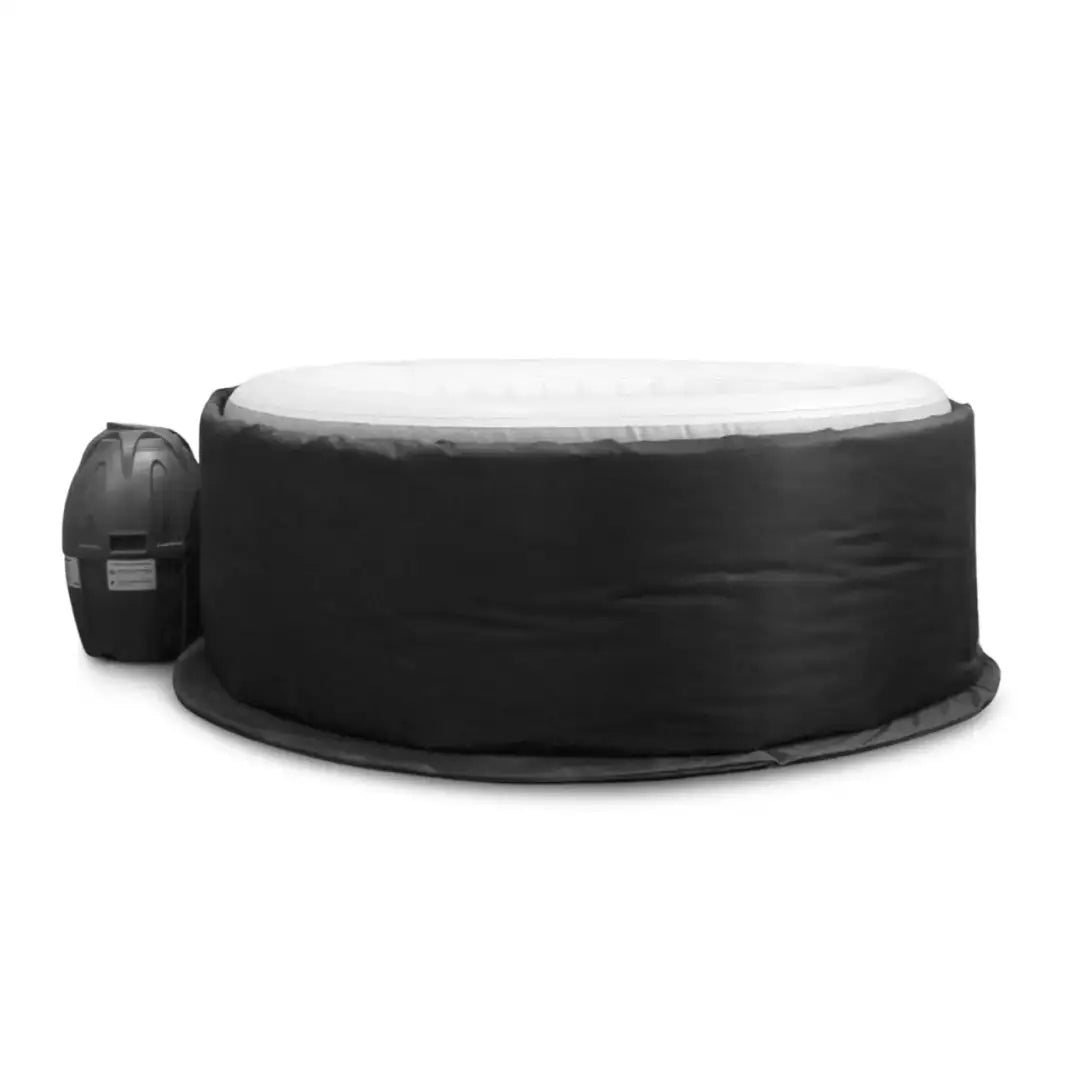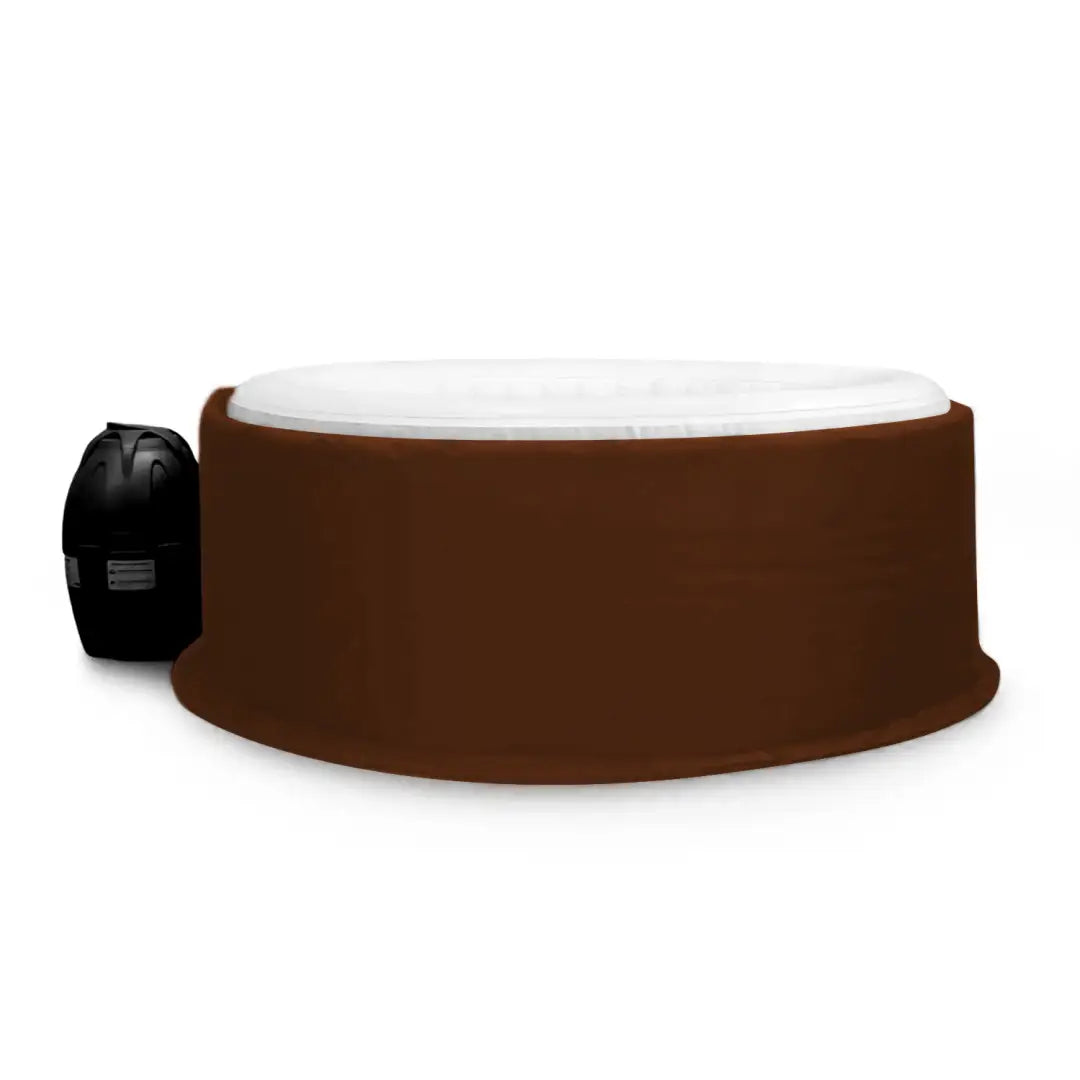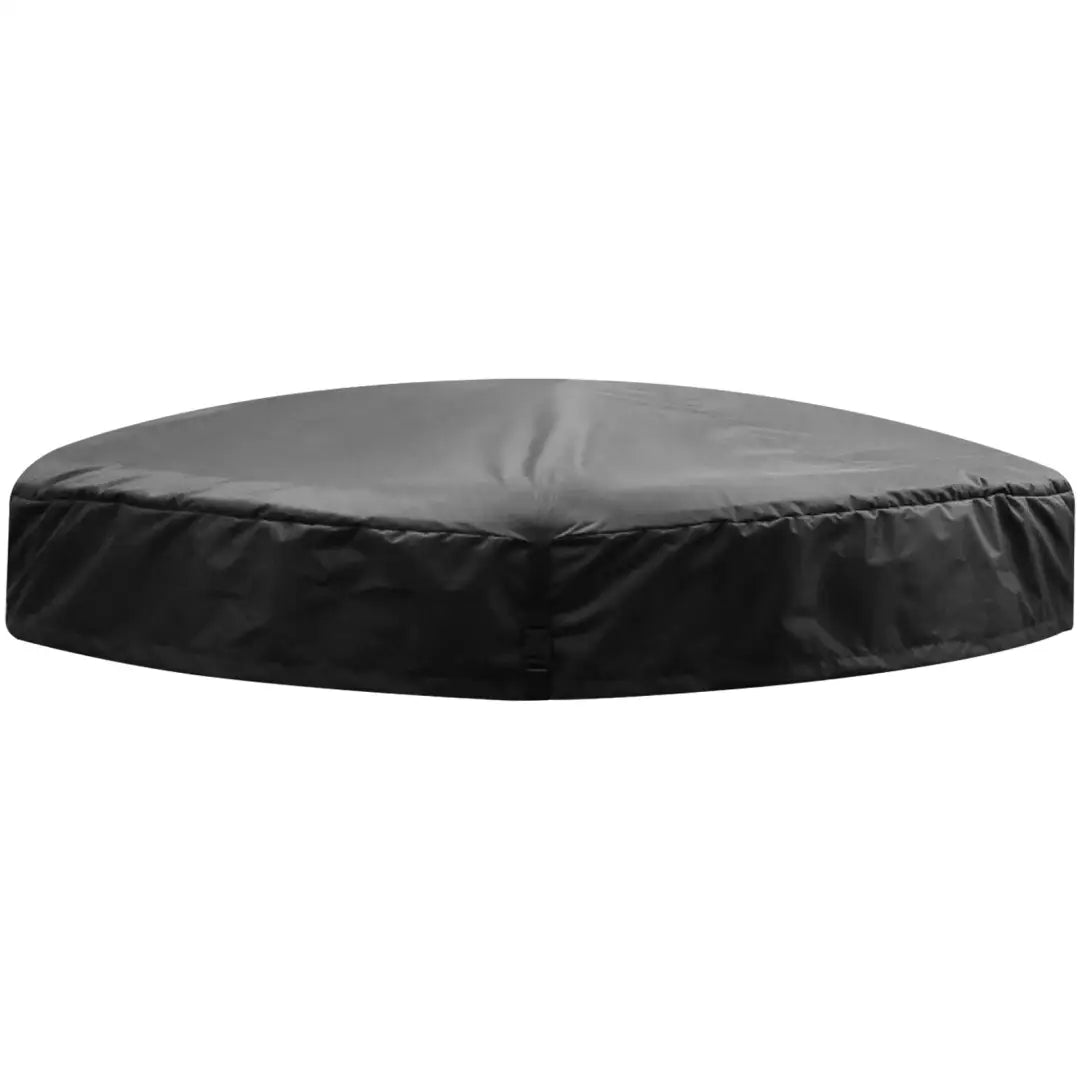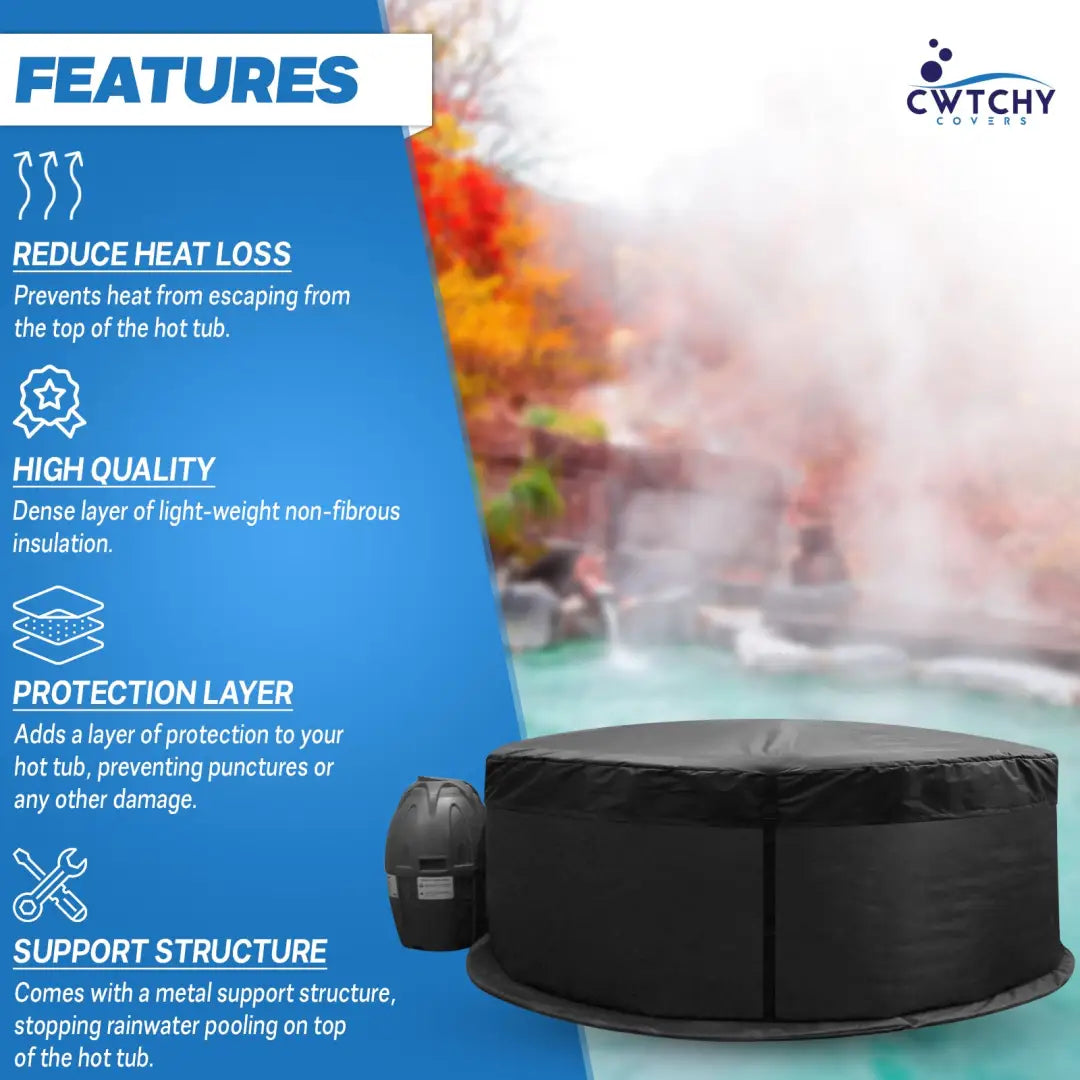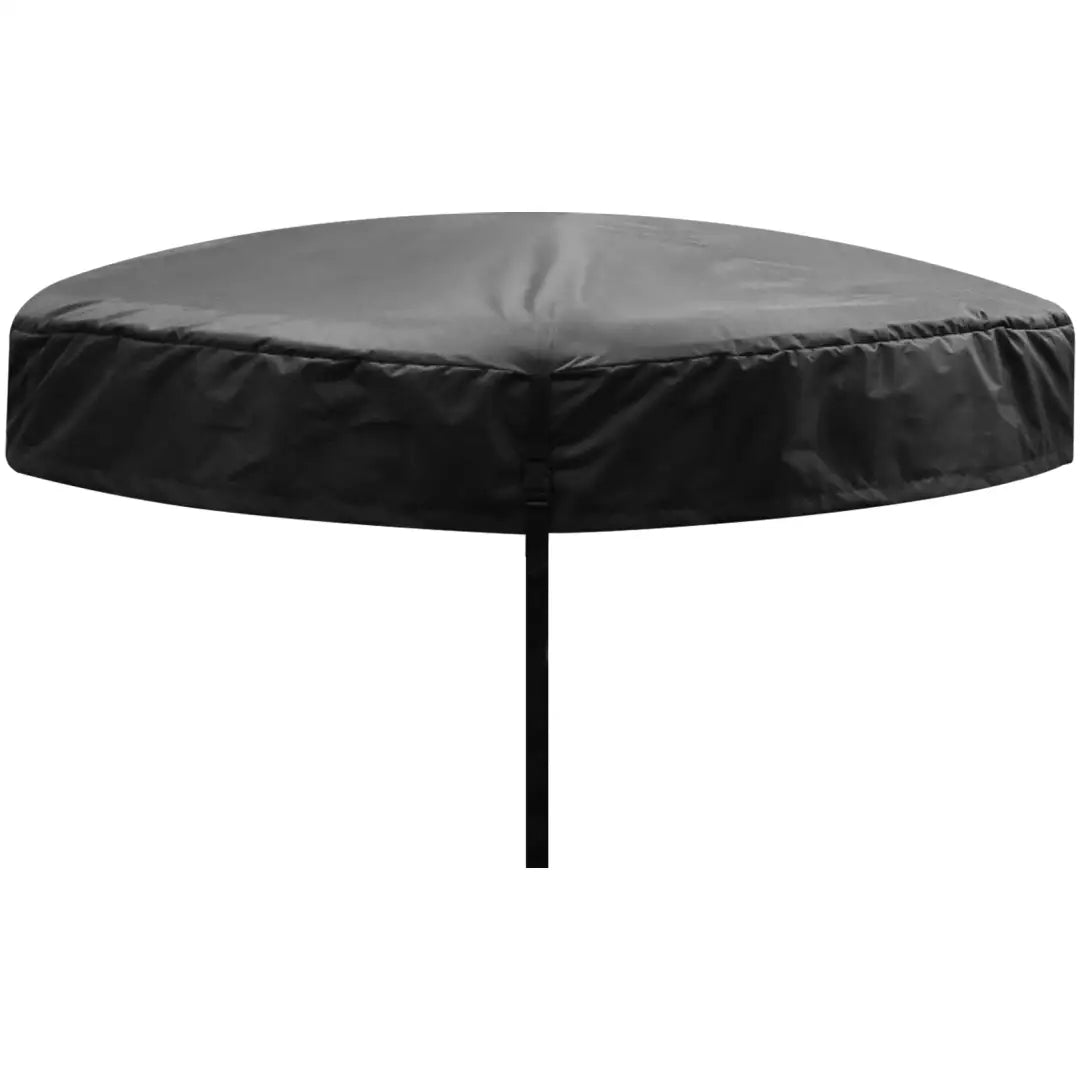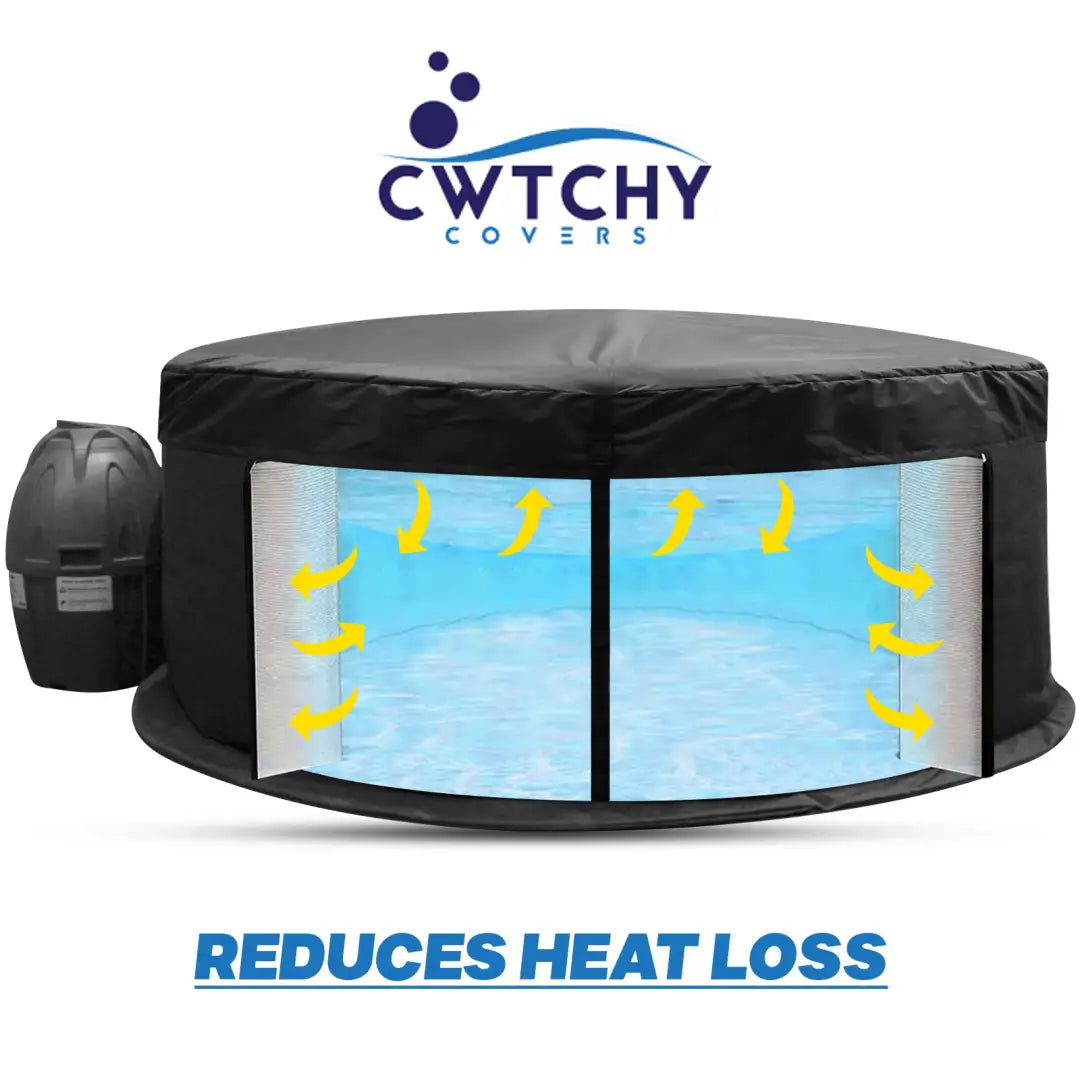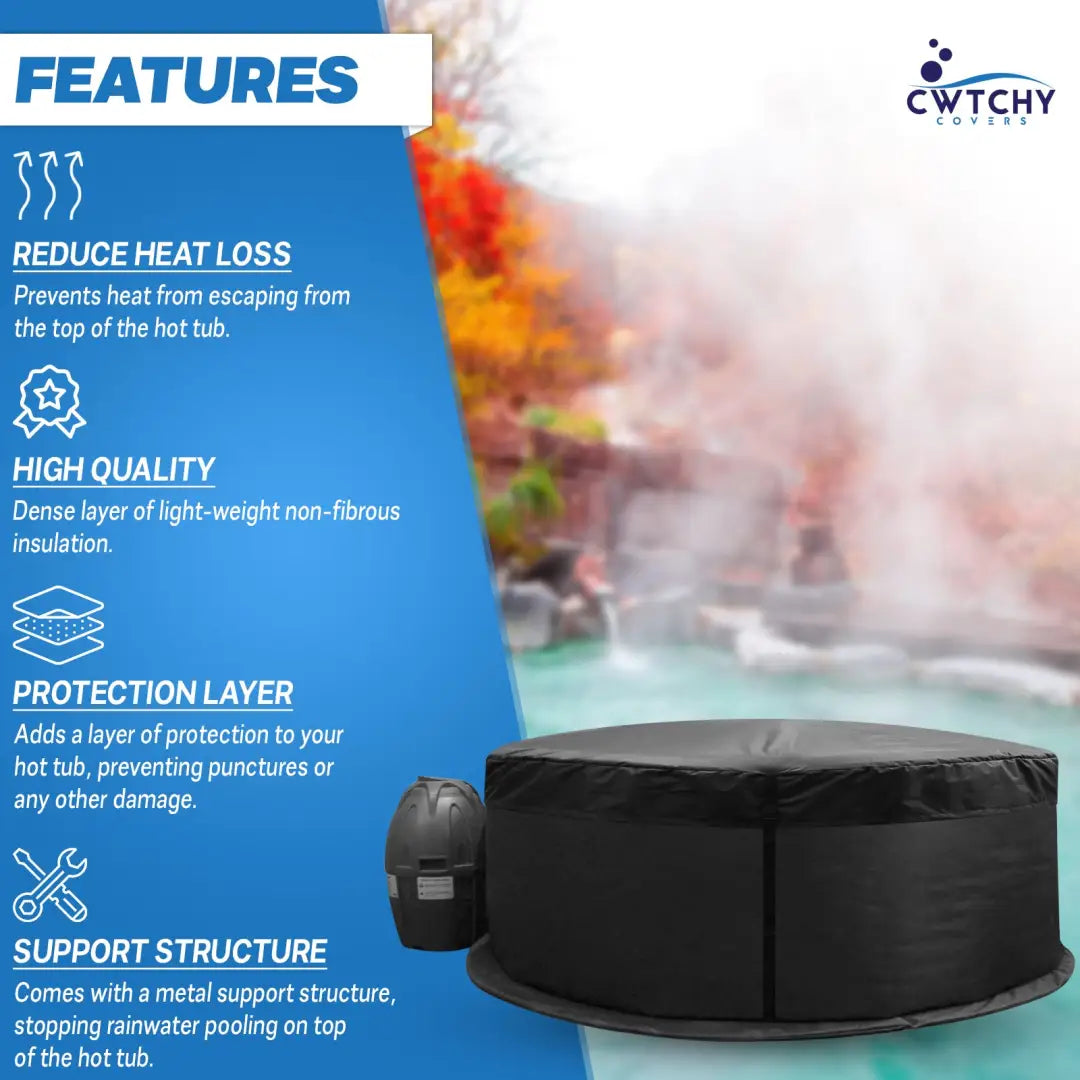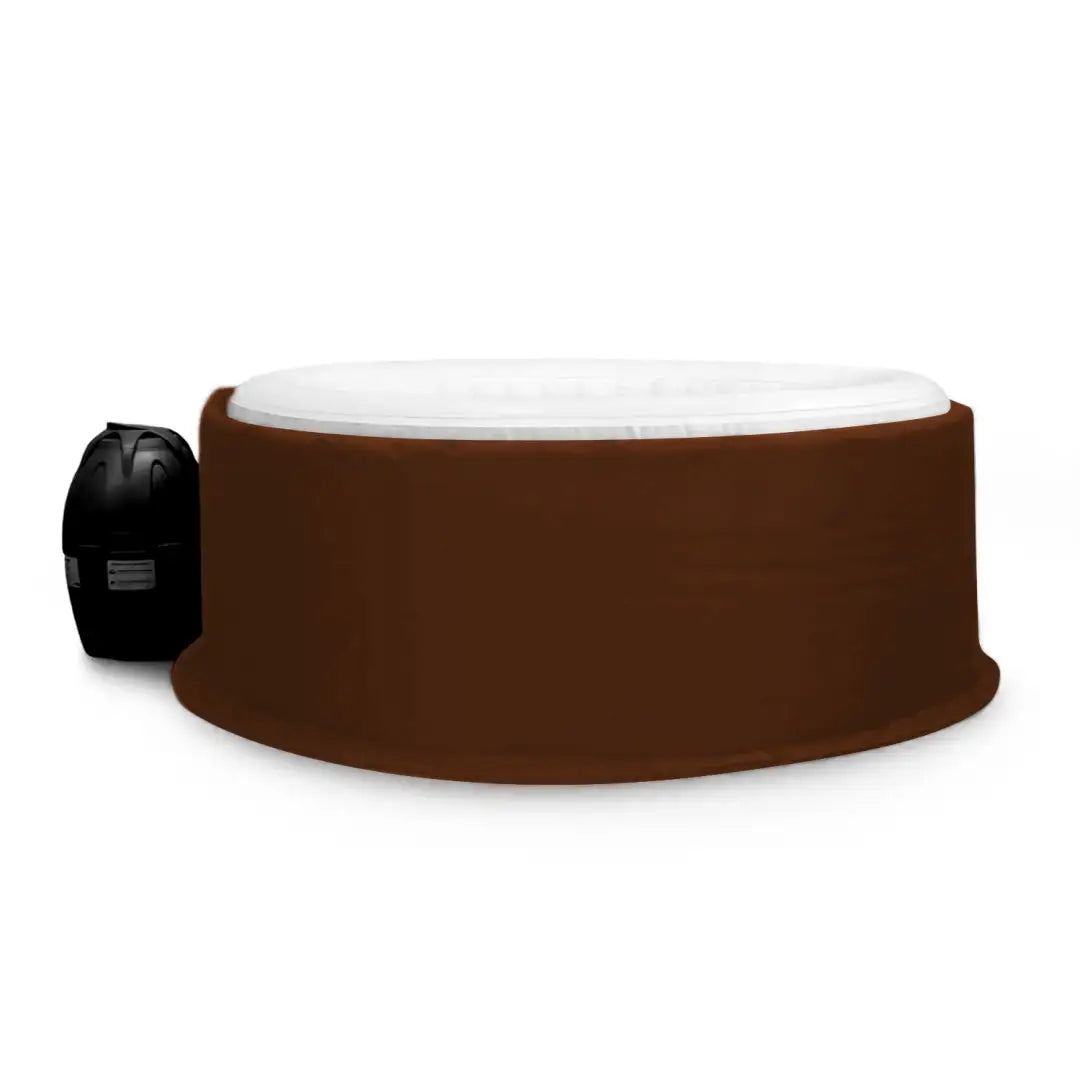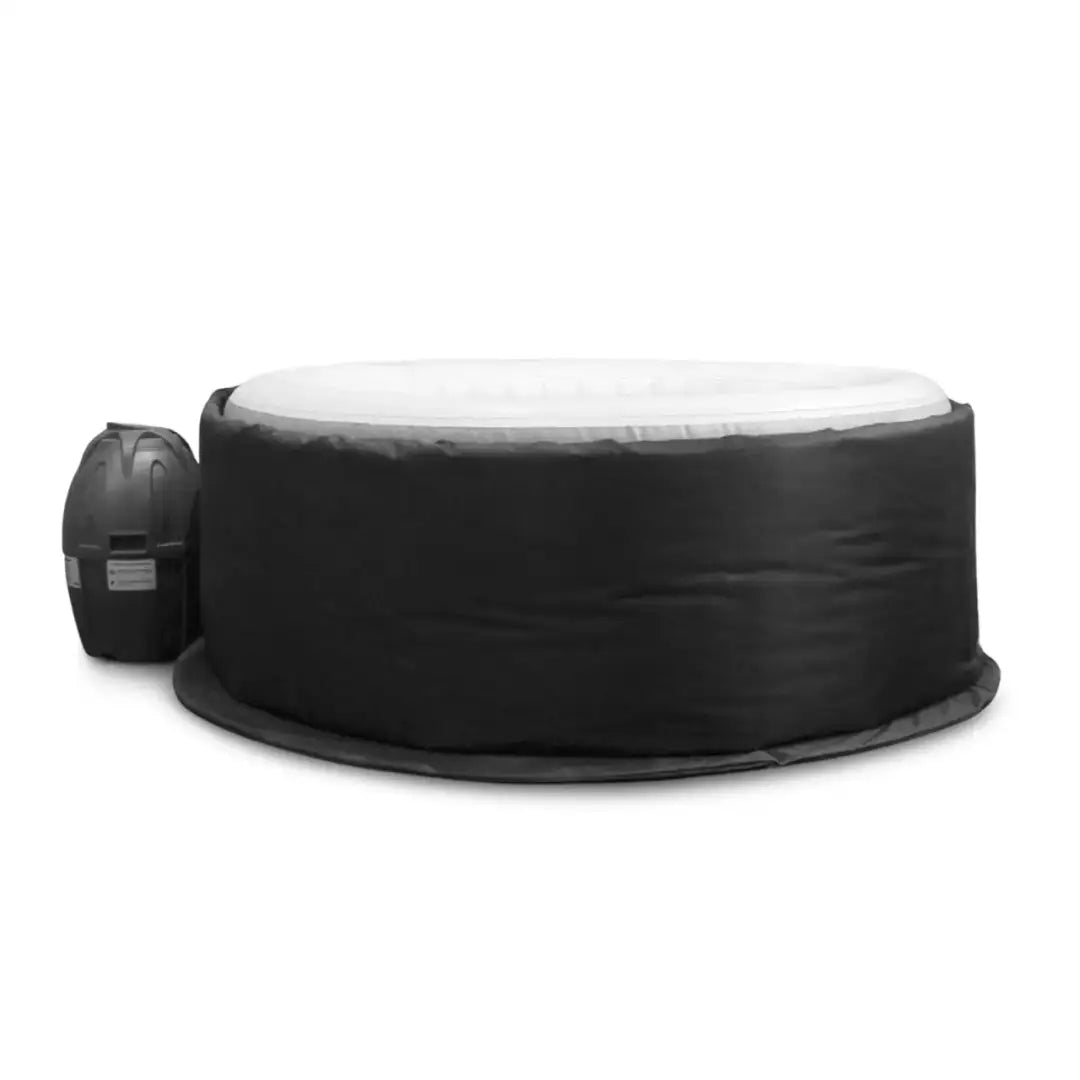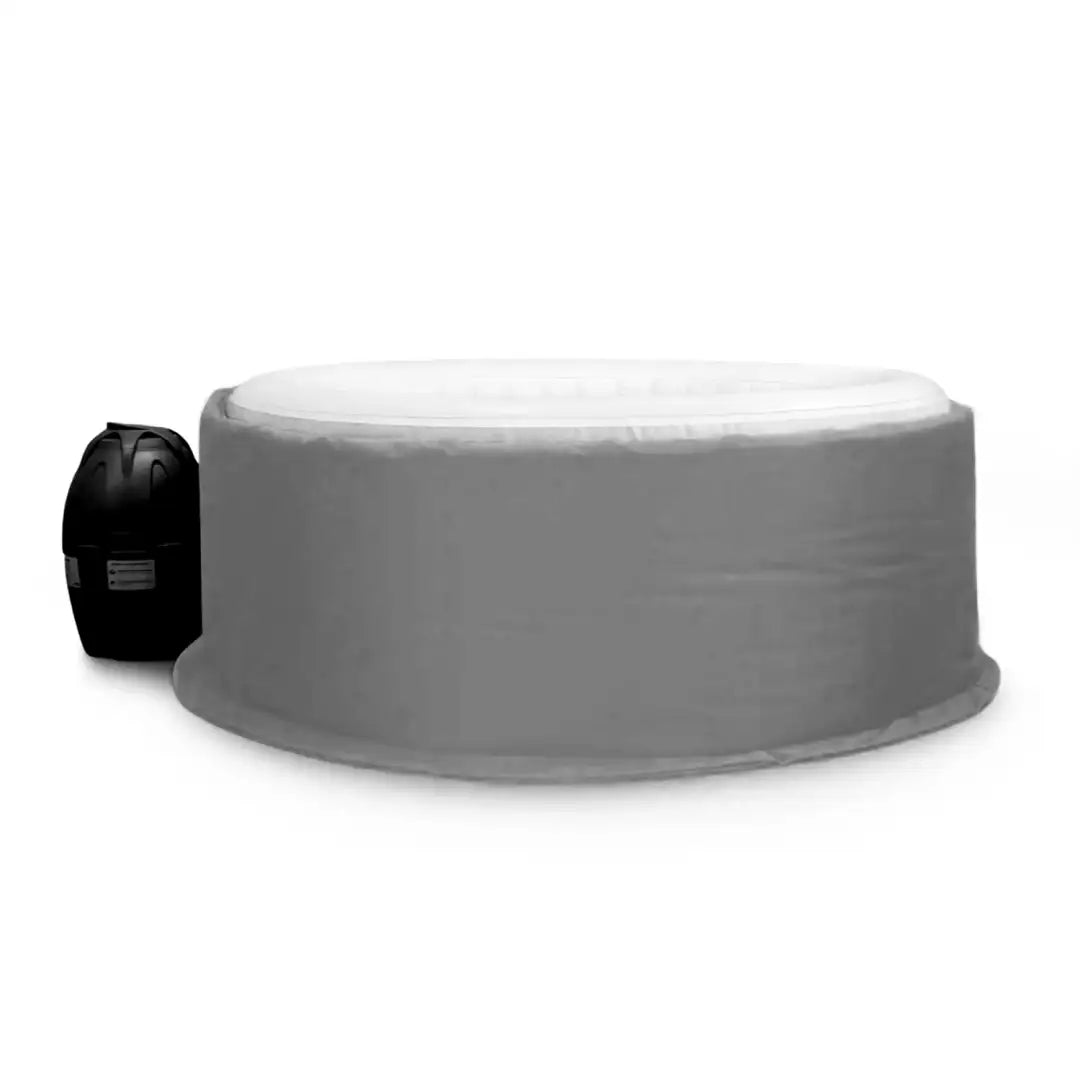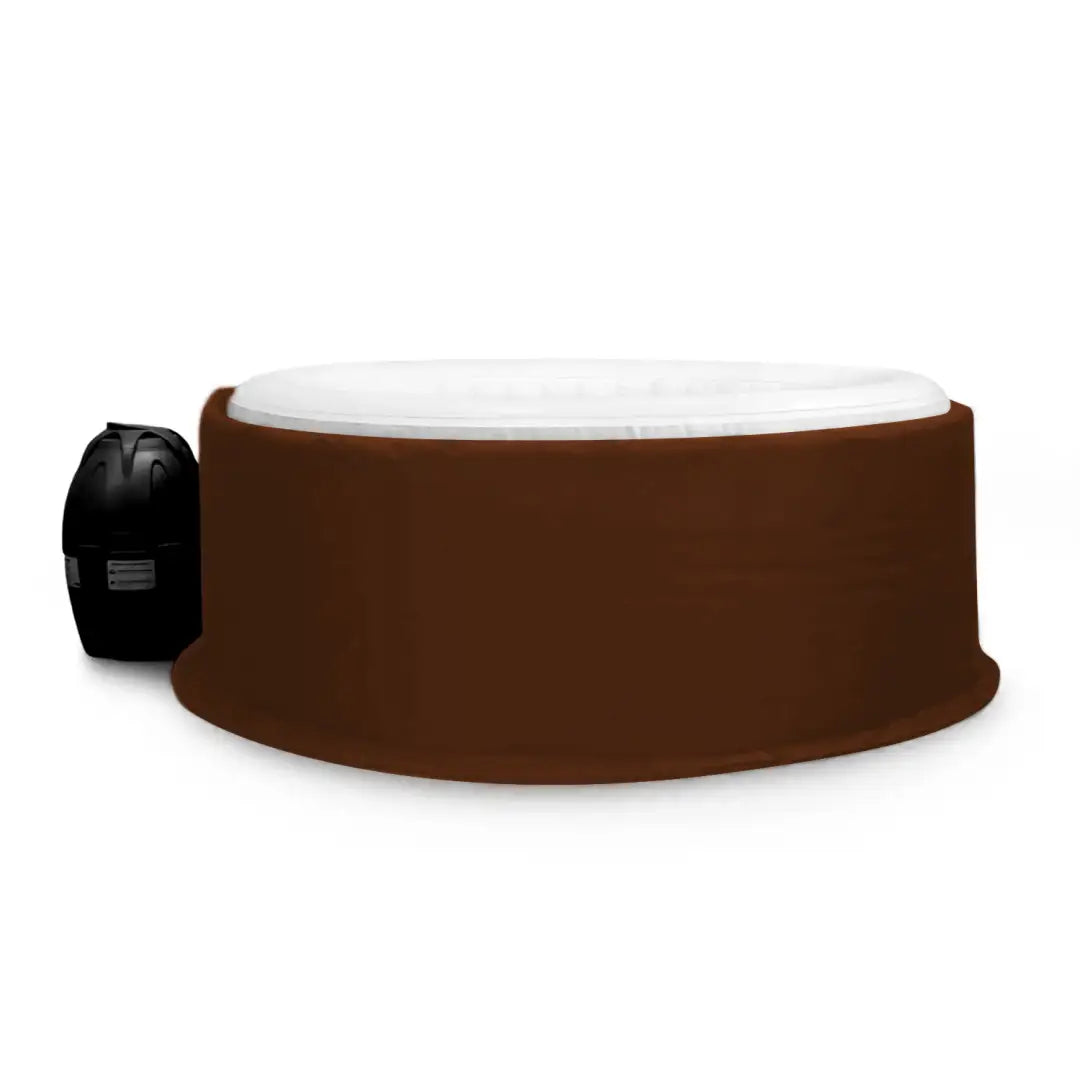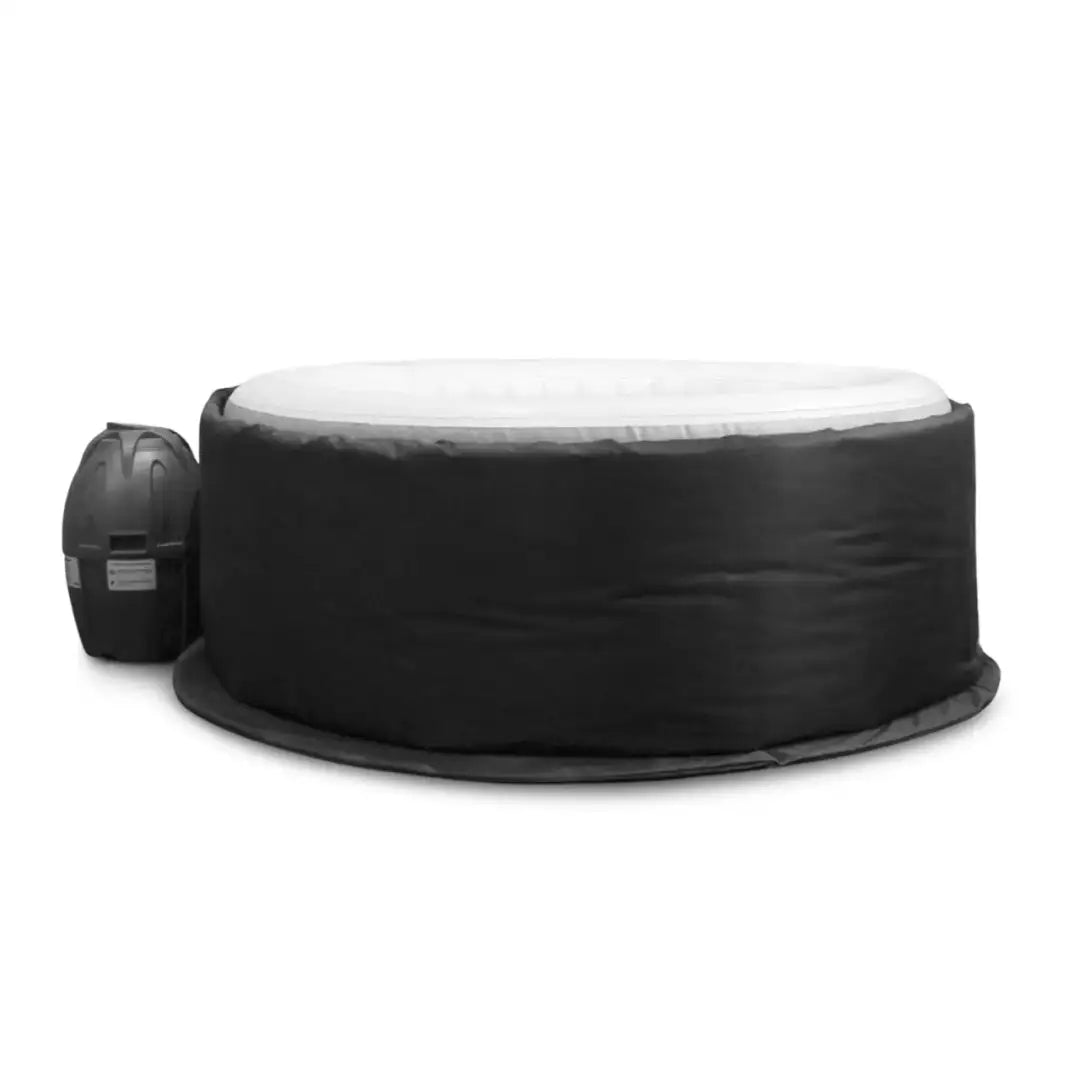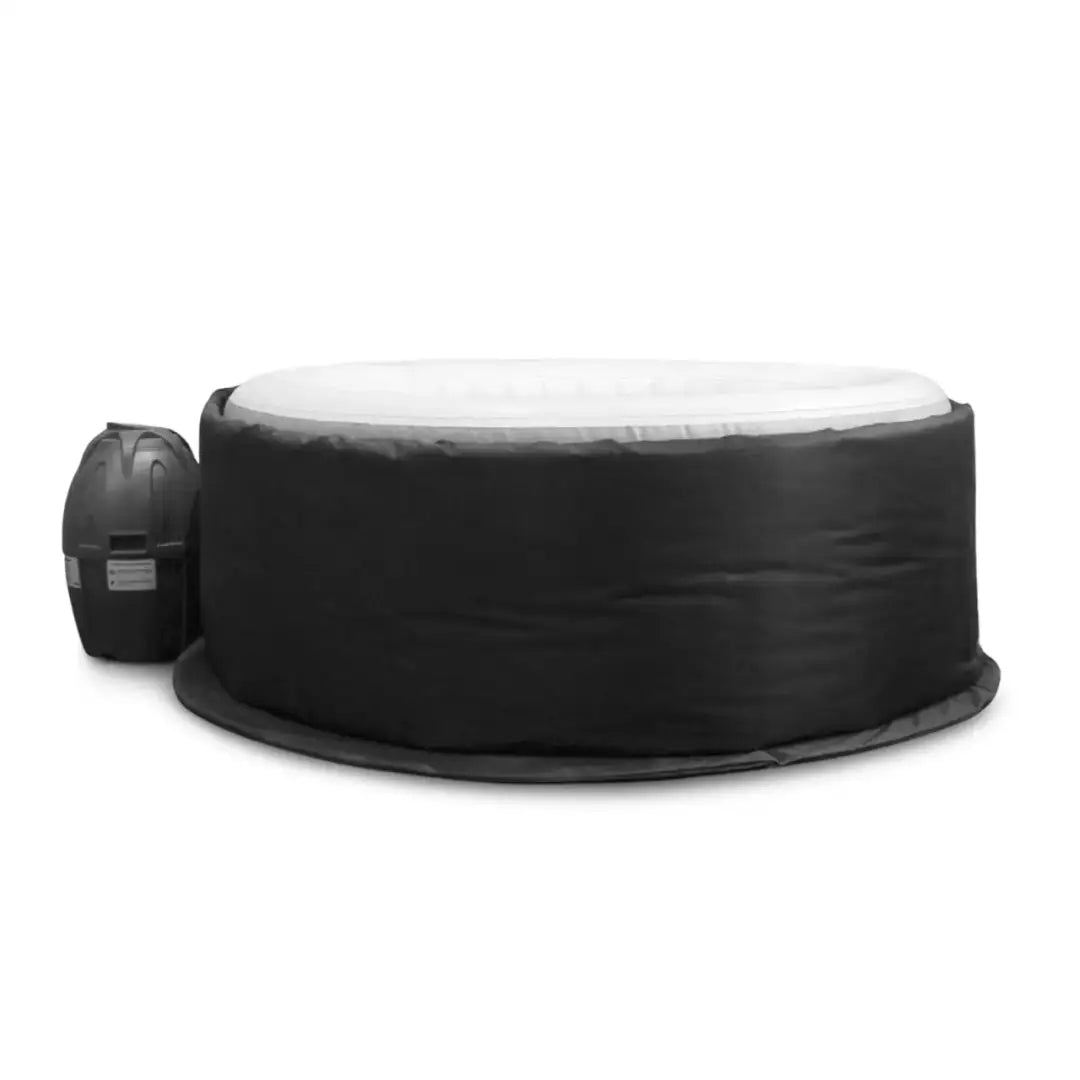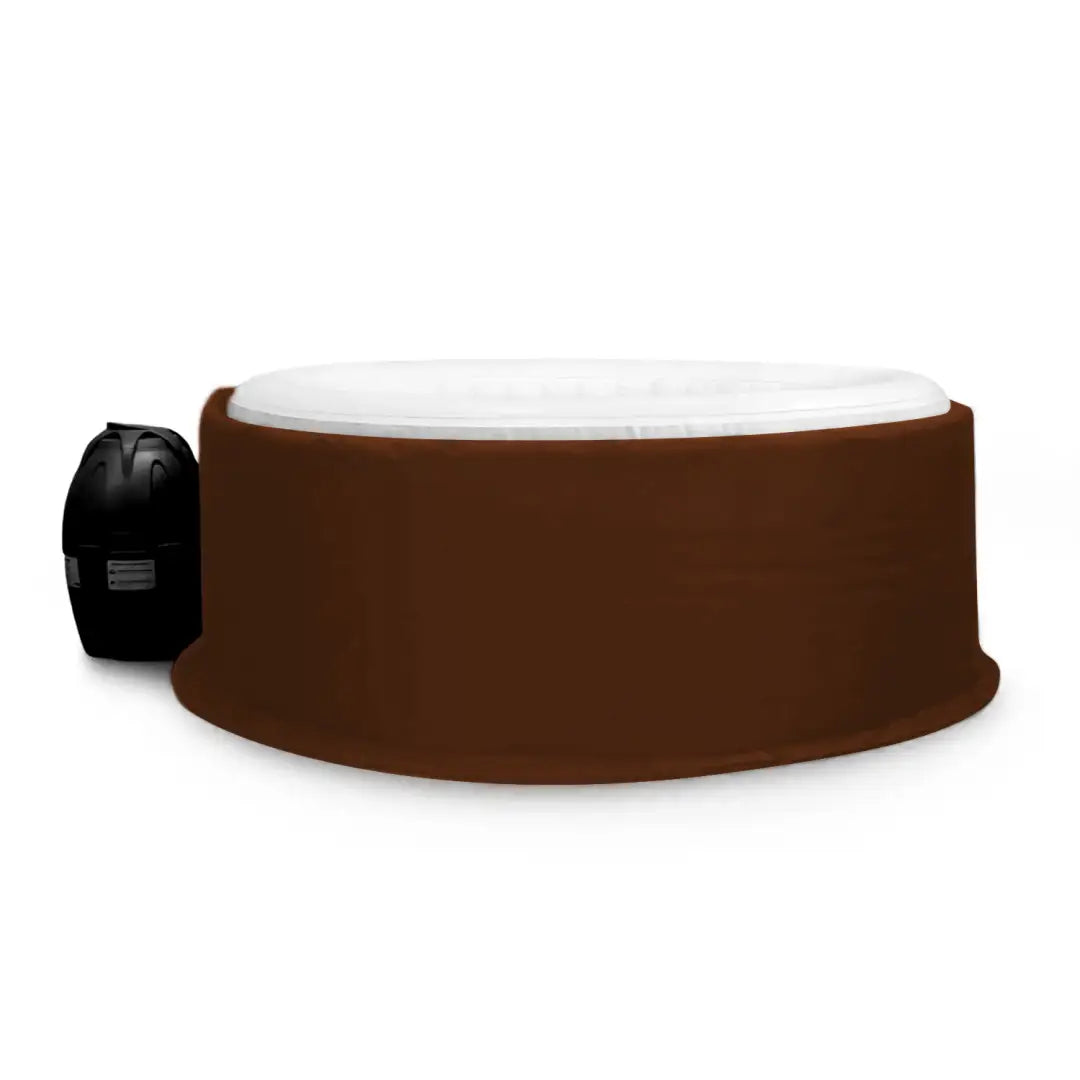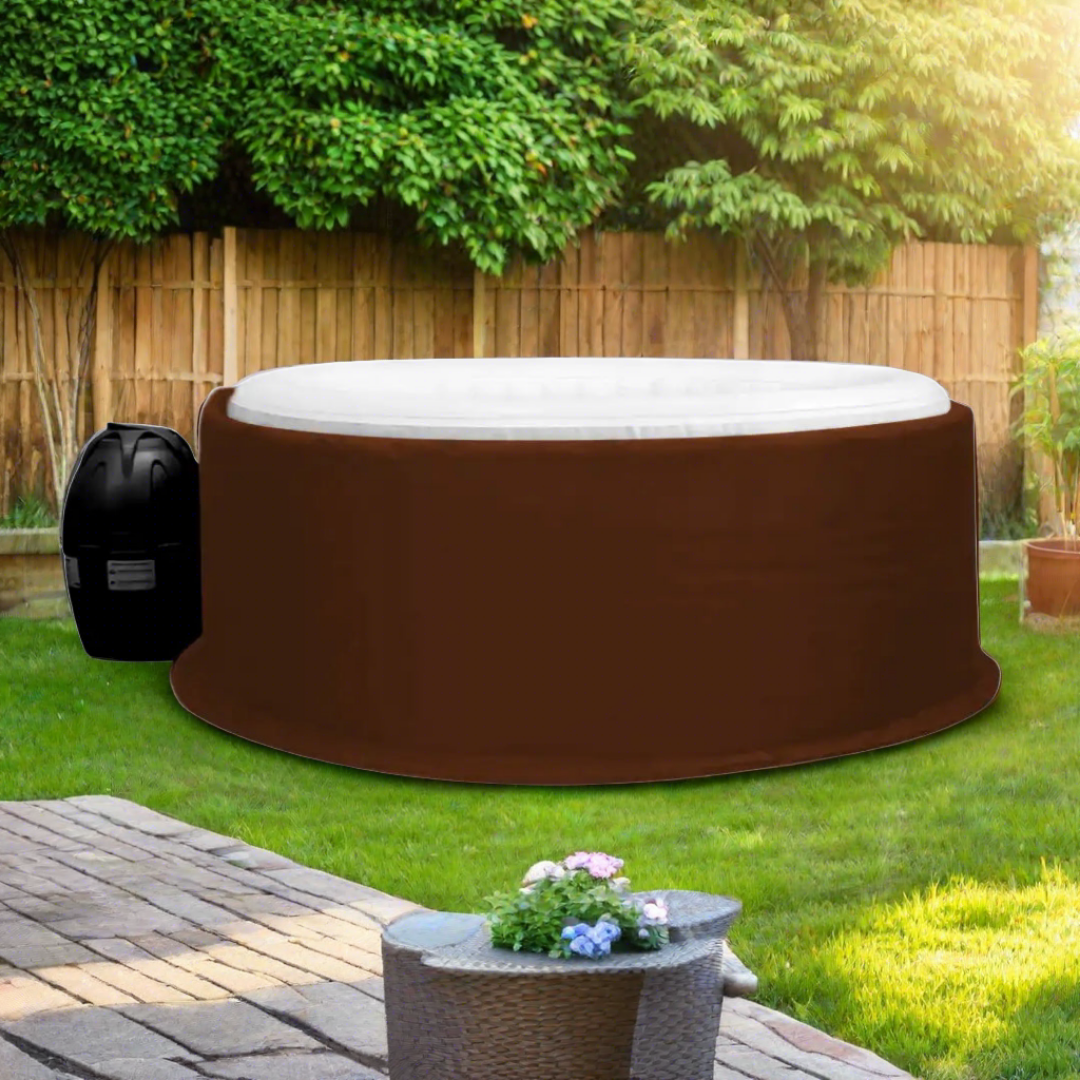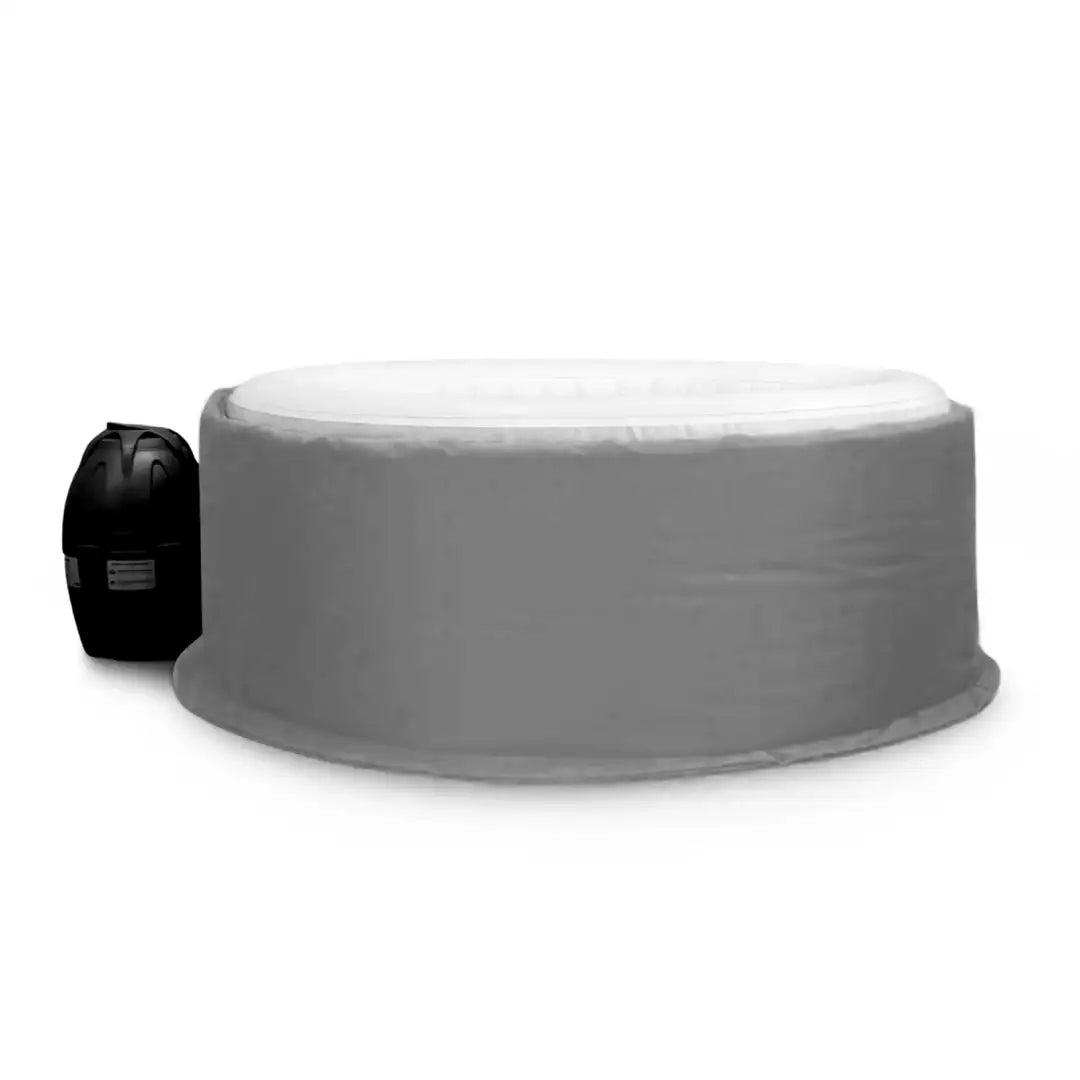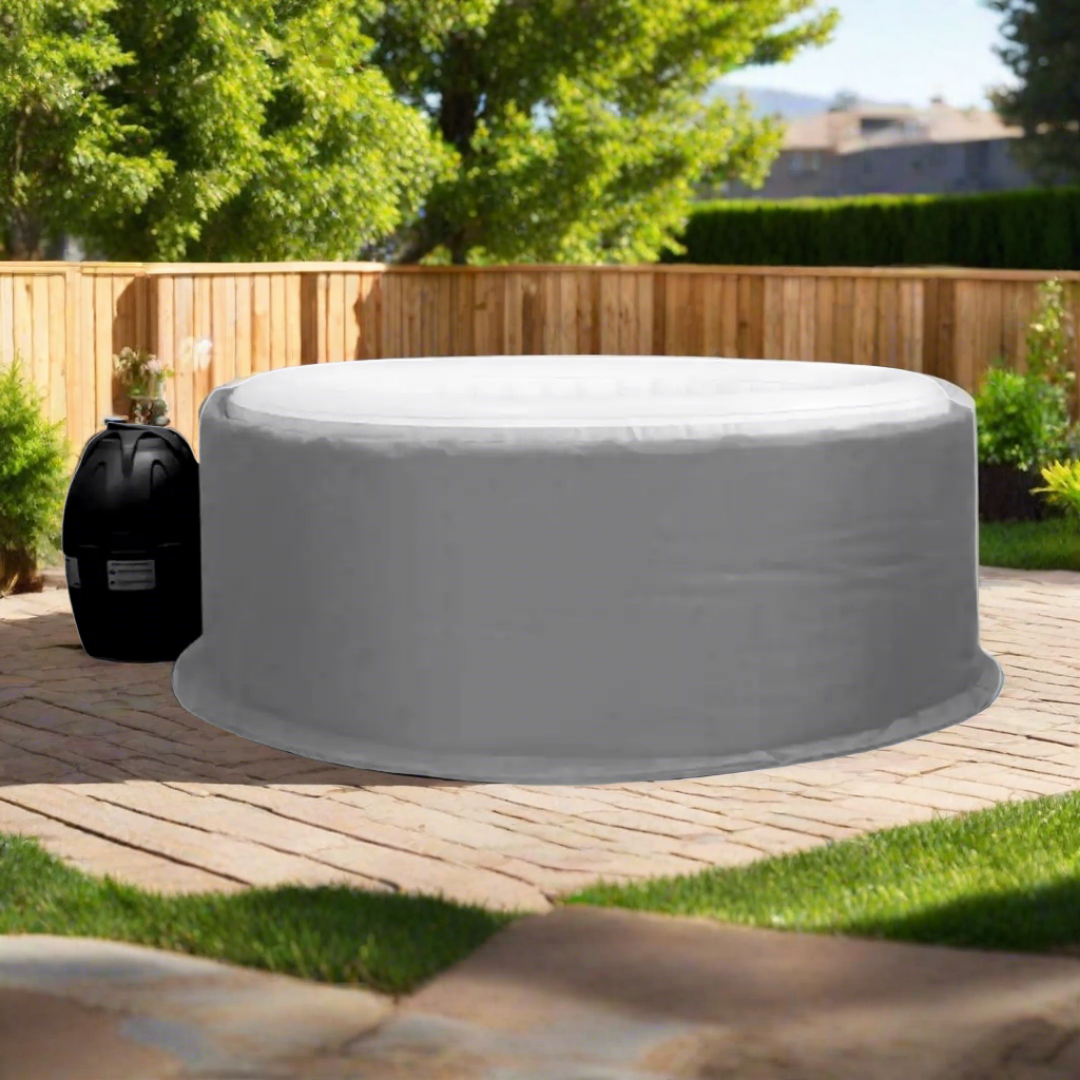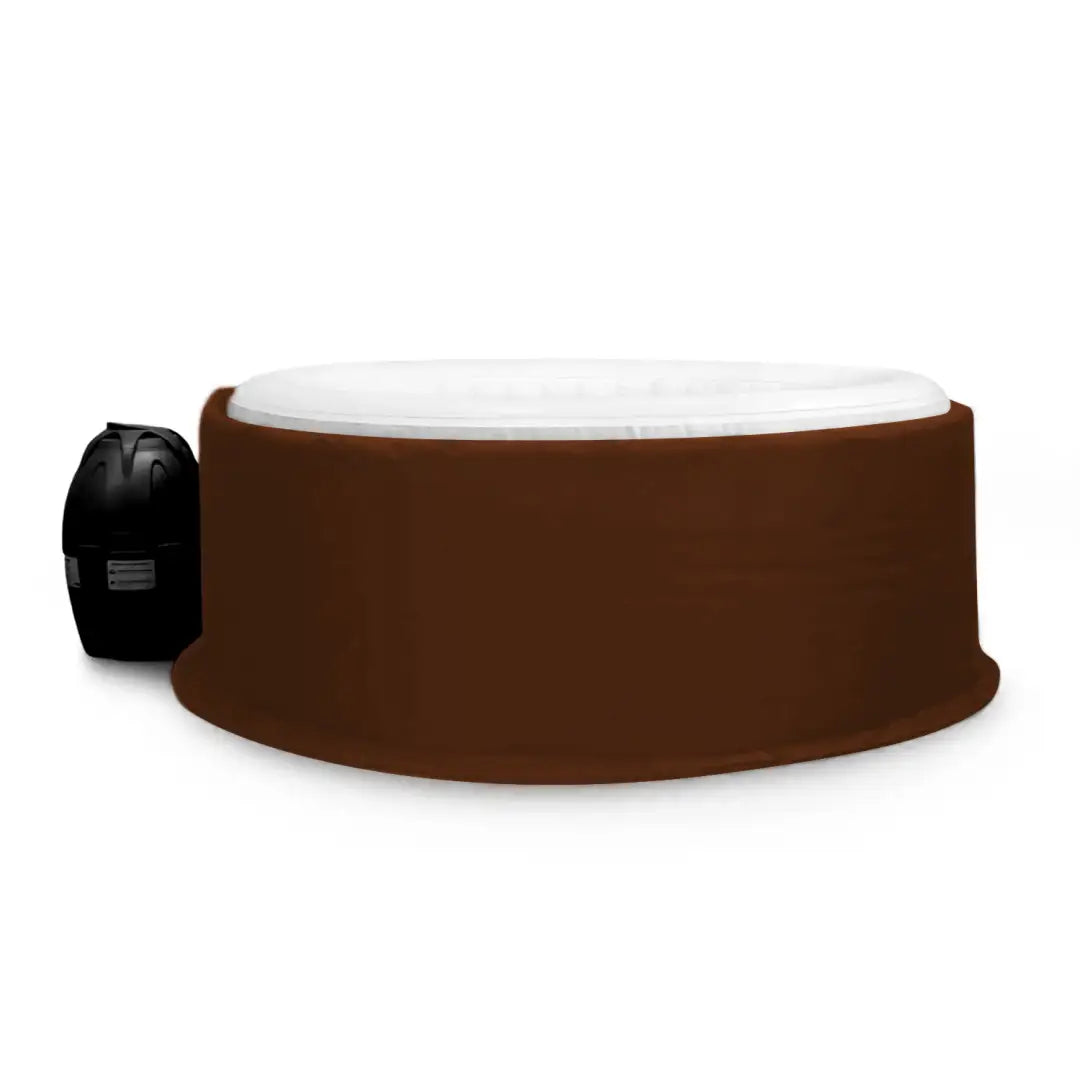Hot Tub Insulation

Operating an inflatable hot tub can use a significant amount of energy to keep water heated to enjoyable temperatures. The lightweight, portable nature of inflatable hot tubs makes them prone to greater rates of heat loss than traditional hard shell hot tubs. Understanding the main causes of heat transfer and implementing methods to minimise it are key to improving energy efficiency and reducing operating costs. The Cwtchy Covers Inflatable Hot Tub Insulation System is designed specifically to tackle heat loss from all angles - the lid, jacket, pad, and pump cover work together to create a comprehensive insulation solution. By reducing the rate of heat dissipation, less energy is required to maintain water temperatures, saving owners money.
How an Inflatable Hot Tub Loses Heat
There are three main methods of heat transfer that cause an inflatable hot tub to lose warmth and consume more energy reheating:
Conduction
Conduction is the direct transfer of heat between two objects in contact with each other. In a hot tub, conduction causes heat to be absorbed from the water into the inflatable tub walls and floor as well as into the ground underneath. The heat conducted into these surfaces is then lost to the surrounding air. An inflatable hot tub's thin vinyl construction conducts heat more readily than a rigid acrylic or plastic shell. The walls and floor offer minimal insulation against conductive heat loss downward or outward.
Convection
Convection is heat dissipation as warmer water molecules move and circulate. As hot water gives off heat, cooler water rotates in, absorbing that warmth. This cycle causes the overall temperature to decline without reheating. The lightweight tub walls and open water surface of an inflatable hot tub promote increased convection. Heat near the surface floats away into the air more freely. Unlike insulated hard shell tubs, inflatables lack thermal mass to limit convection.
Evaporation
Evaporation causes heat loss as warmer water converts to vapour and leaves the tub's surface. As molecules evaporate, they draw energy away from the remaining water. Just like sweat cooling your body as it evaporates, hot tub water also cools from evaporation. The large open water surface of inflatable hot tubs leads to increased evaporation compared to enclosed hard-shell hot tubs. Ambient humidity and wind levels also contribute to evaporative heat loss.
Impact of Heat Loss on Energy Use and Costs
The increased rate of heat dissipation through conduction, convection, and evaporation means an inflatable hot tub's heating system must work harder and run longer to maintain set water temperatures. Pumps and heating elements activate more frequently to reheat cooled water. Filtration cycles also extend in an attempt to retain warmth. All this added activity consumes substantial amounts of electricity. For a typical inflatable hot tub used 3-4 times per week, heat loss can add £60-£100 per month during colder seasons to operate the tub and make up for lost warmth. Over the 3-5 year lifespan of an inflatable hot tub, an un-insulated model can cost £2000+ more to run than an efficiently insulated version.
How the Cwtchy Covers System Insulates Against Heat Loss

The four components of the Cwtchy Covers Inflatable Hot Tub Insulation System each target one of the main heat transfer causes to create a fully insulated inflatable hot tub environment.
Hot Tub Thermal Cover / Insulated Lid
The insulated lid is custom-sized for your make and model with thick insulation to minimise heat dissipation from the hot tub water's surface. This tackles heat loss from evaporation and convection by providing a barrier above the water. Just as home attic insulation minimises warmth escaping through the roof, the insulated hot tub lid traps rising heat within the water rather than letting it drift away into the air. Sealing the lid against the tub also limits air flow that accelerates evaporation.
Hot Tub Thermal Wrap / Insulated Jacket
Wrapping your inflatable hot tub in a tailored insulated jacket addresses conductive heat loss through the thin vinyl walls. The water-resistant insulation creates insulation similar to a cooler, preventing heat absorption by the surrounding air. The insulated jacket supplements the tub's limited natural insulation to maintain more consistent temperatures throughout the depth of the water. Less heat gets conducted through the walls only to be released outdoors.
Hot Tub Thermal Mat / Insulated Base
Placing your inflatable hot tub on top of a foam insulated pad prevents conductive heat transfer into the ground below the unit. This is especially important for portable tubs placed on grass or dirt. The insulated pad adds a crucial layer of insulation between the existing floor of the tub and the earth, driveway, or surface underneath. Keeping ground temperatures from depleting warmth within the water reduces reheating demands.
Hot Tub Insulated Pump Cover
Wrapping insulation around the pump machinery housing improves efficiency in multiple ways. Insulation prevents absorbed wall heat from radiating back out into the surroundings and being wasted. An insulated pump also stays warmer internally, reducing energy demands and workload to power heating and circulation. This saves electricity while an un-insulated exposed pump would lose warmth and function less efficiently.
Benefits of Comprehensive Hot Tub Insulation
By addressing the main causes of heat loss in inflatable hot tubs, the Cwtchy Covers Insulation System: Reduces heating system workload and electrical draw. Minimises temperature fluctuations and water reheating needs. Improves circulation pump efficiency by keeping machinery warmer. Lessens demands on filtration cycles to retain warmth. Saves inflatable hot tub owners up to £150+ per month in electricity costs. Lowers carbon footprint by conserving energy. Extends the lifespan of heating elements and pumps. Allows for lower temperature settings to retain comfort. Provides a higher return on your inflatable hot tub investment.
Conclusion
The lightweight and portable construction of inflatable hot tubs that make them convenient and affordable also contributes to increased heat dissipation compared to traditional in-ground hot tubs. Addressing the key causes of conductive, convective, and evaporative heat transfer is crucial to economical inflatable hot tub operation. Comprehensive insulation using products like the Cwtchy Covers Insulation System creates a fully insulated environment that retains water heat longer. By keeping your hot tub warmer with less electricity required for reheating, insulation provides significant savings over the lifetime of an inflatable hot tub. Contact Cwtchy Covers today to improve your inflatable hot tub's efficiency.
Frequently Asked Questions
How much money could I save by insulating my inflatable hot tub?
Proper insulation can save £60-£100 per month on electricity costs during colder weather by retaining heat and reducing reheating demands. Over 3-5 years, you could save £2000+ in energy costs.
What type of insulation does Cwtchy Covers use?
Cwtchy Covers Insulation System uses high-quality, water resistant insulation materials designed specifically for inflatable hot tubs, like polyethylene foam and industrial strength insulation materials.
Will insulation affect my hot tub's performance?
No, insulation will not hinder jet performance, filtration, or any other normal hot tub functions. It will actually improve overall efficiency.
How difficult is it to install the insulation products?
The Cwtchy Covers Insulation System is designed for quick and easy installation. Simply place the pad, surround with the jacket, and put the lid on top. No tools or complexity required.
Can insulation damage my inflatable hot tub?
No, the Cwtchy Covers insulation is specially engineered to be entirely safe for all inflatable hot tub models without risk of damage.
Will insulation affect my warranty coverage?
Insulation will not void your original hot tub warranty. Only unauthorized modifications would impact coverage, not add-on insulation.
How long does hot tub insulation last?
With proper care, the insulation should last 3-5 years, matching the average lifespan of an inflatable hot tub. The products are very durable.
Does insulation make the hot tub heavier or harder to move?
No, the insulation is designed as a system of parts that can be assembled and disassembled easily, meaning it does not affect the portability of your inflatable hot tub at all.
Can I take the insulation off periodically?
Yes, the insulation is designed for quick on/off capability while still providing a secure fit when on the hot tub.
Will the insulation products fit my inflatable hot tub model?
Cwtchy Covers offers insulation customised to all major inflatable hot tub makes and models for perfect fit. Due to the sheer number of makes and models not all are listed but can and will be made to order.


